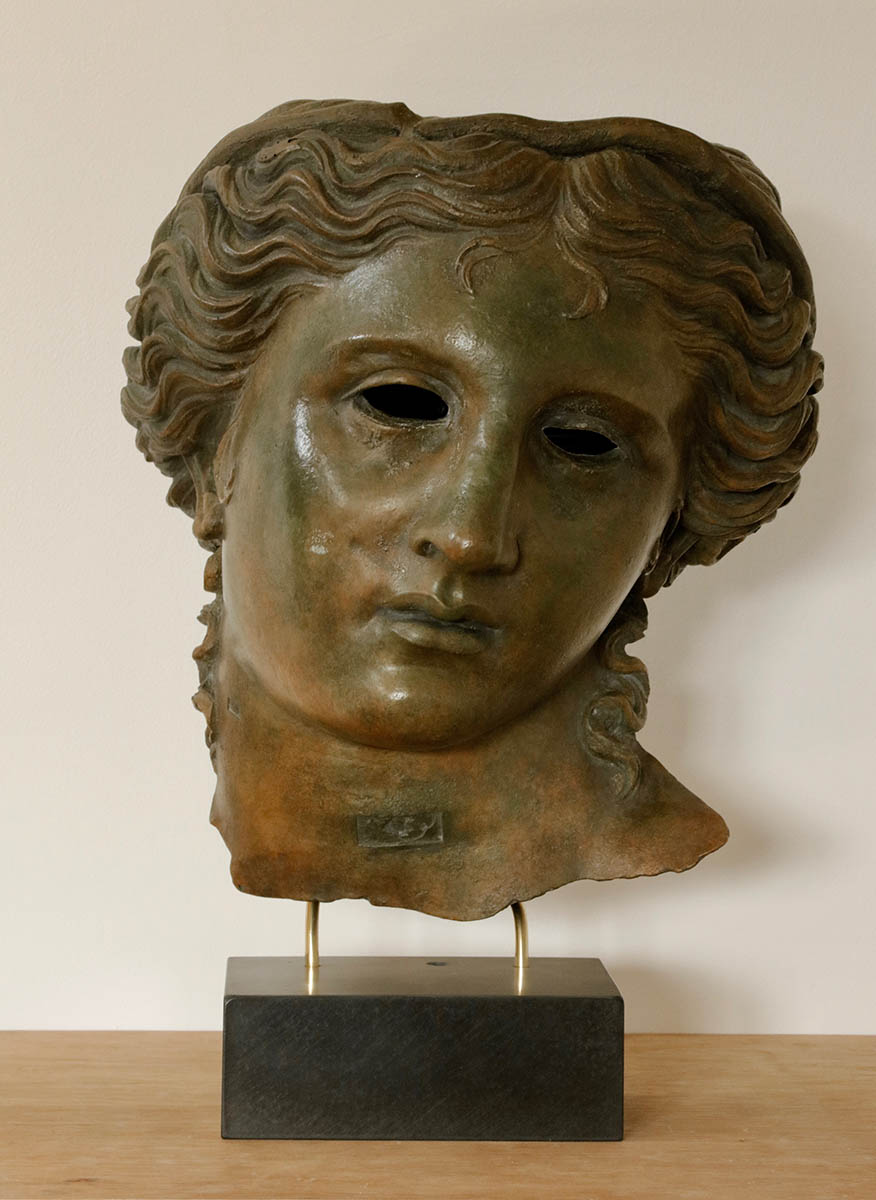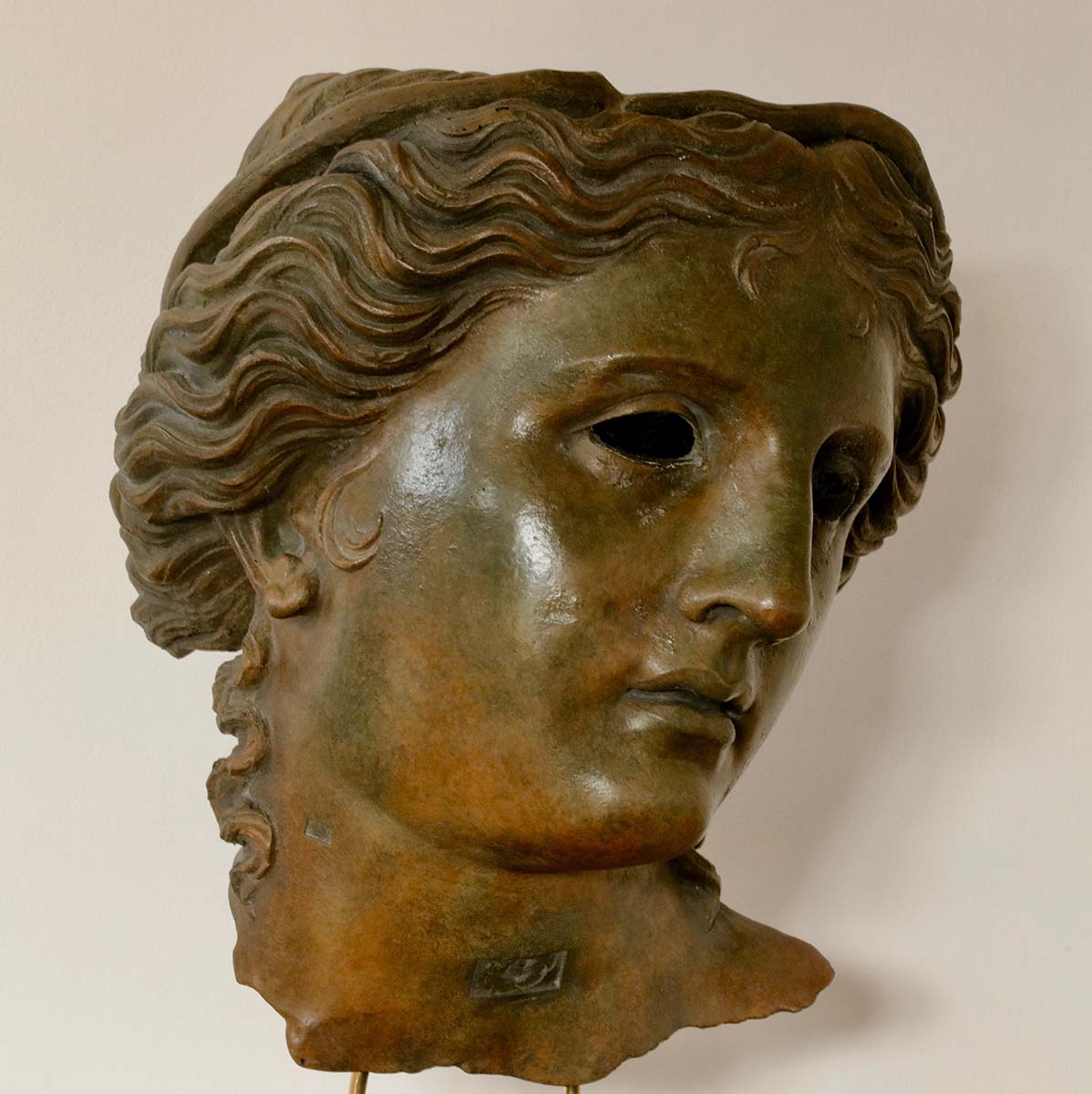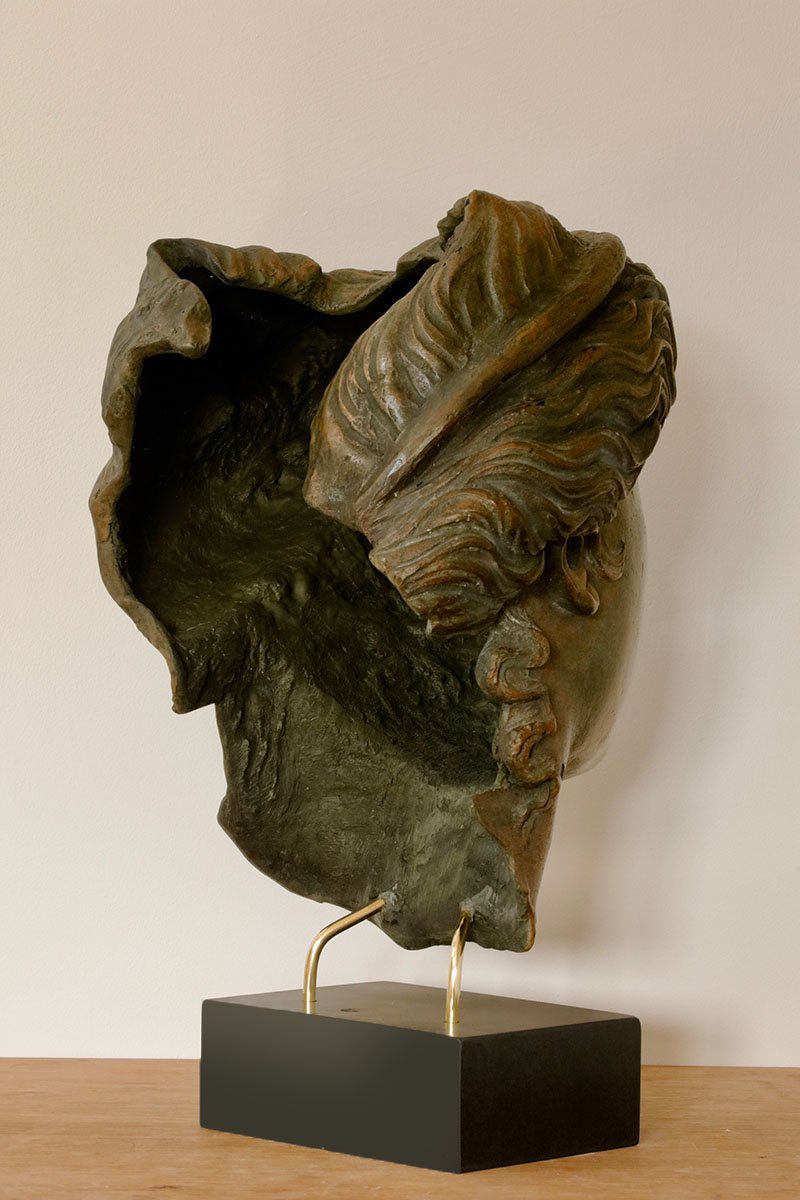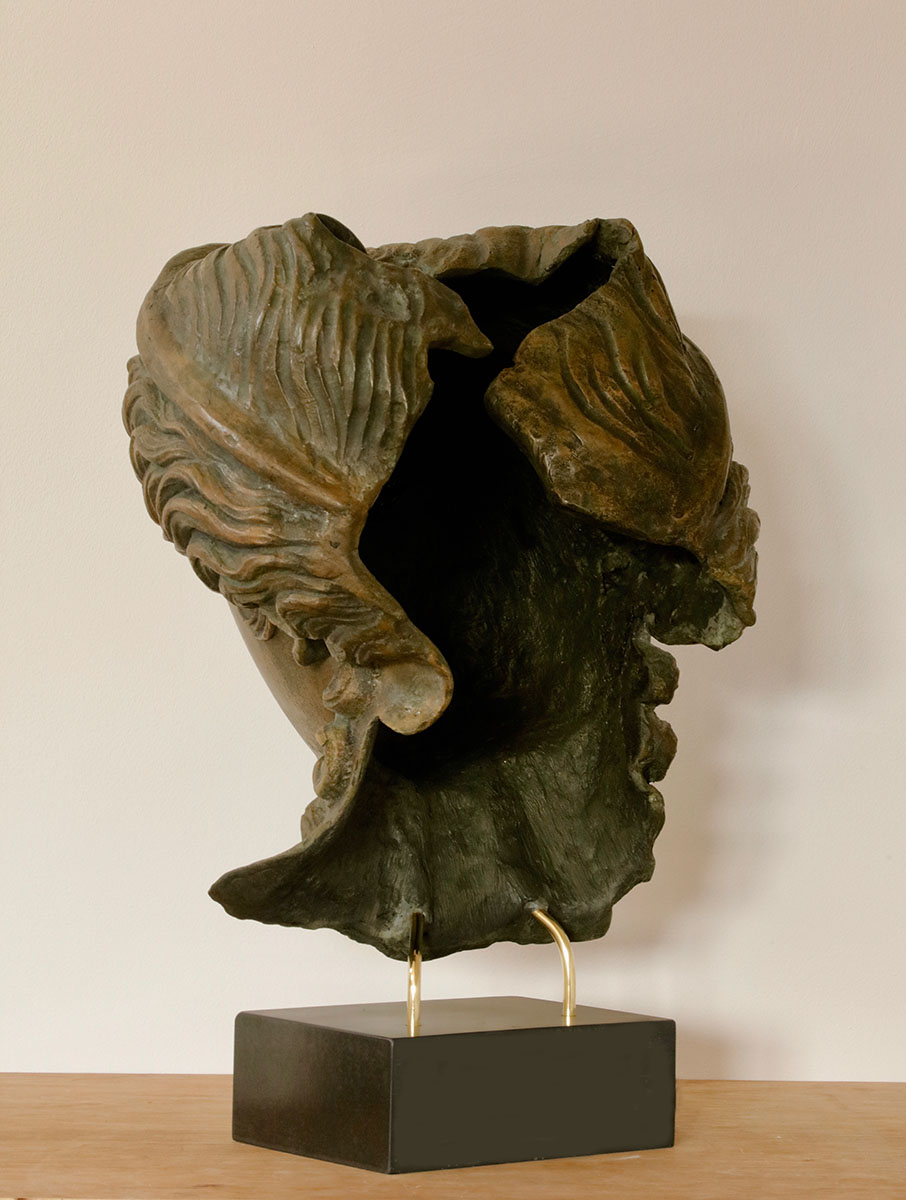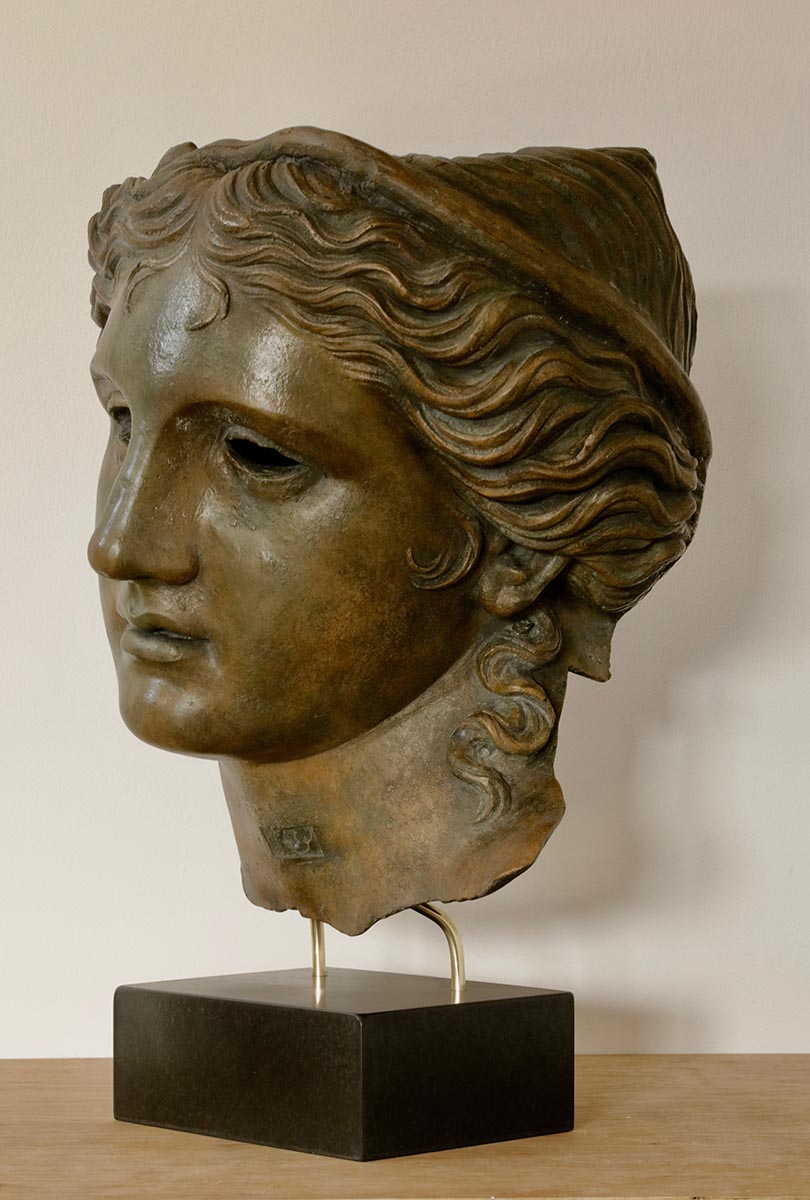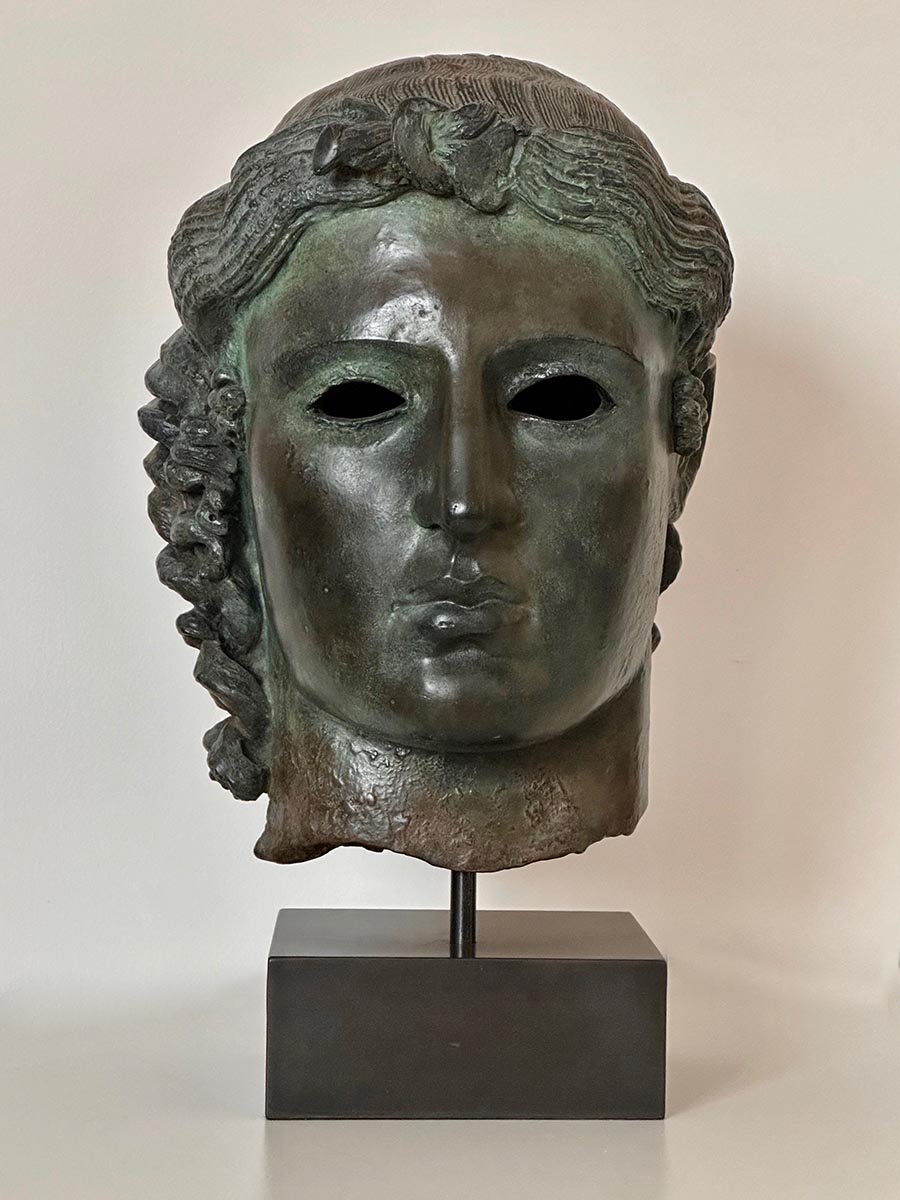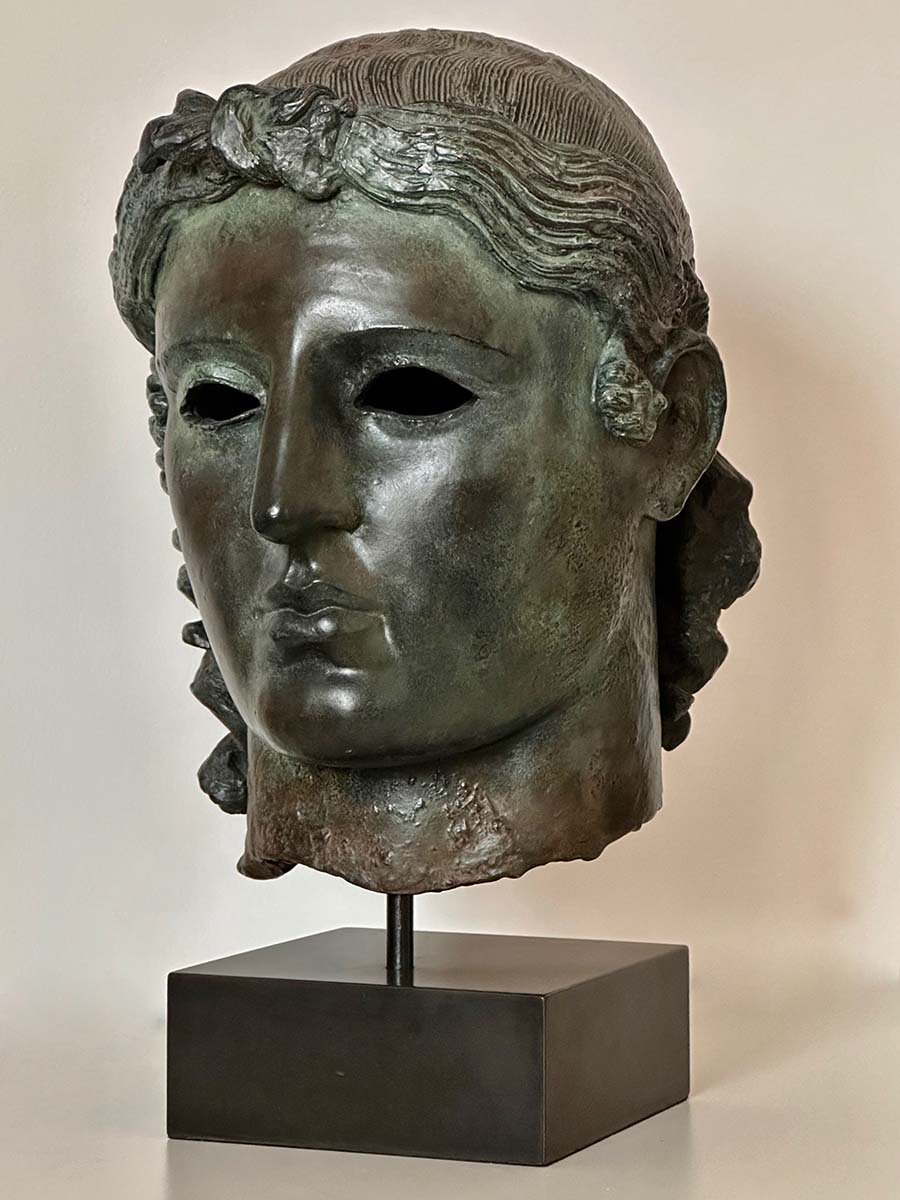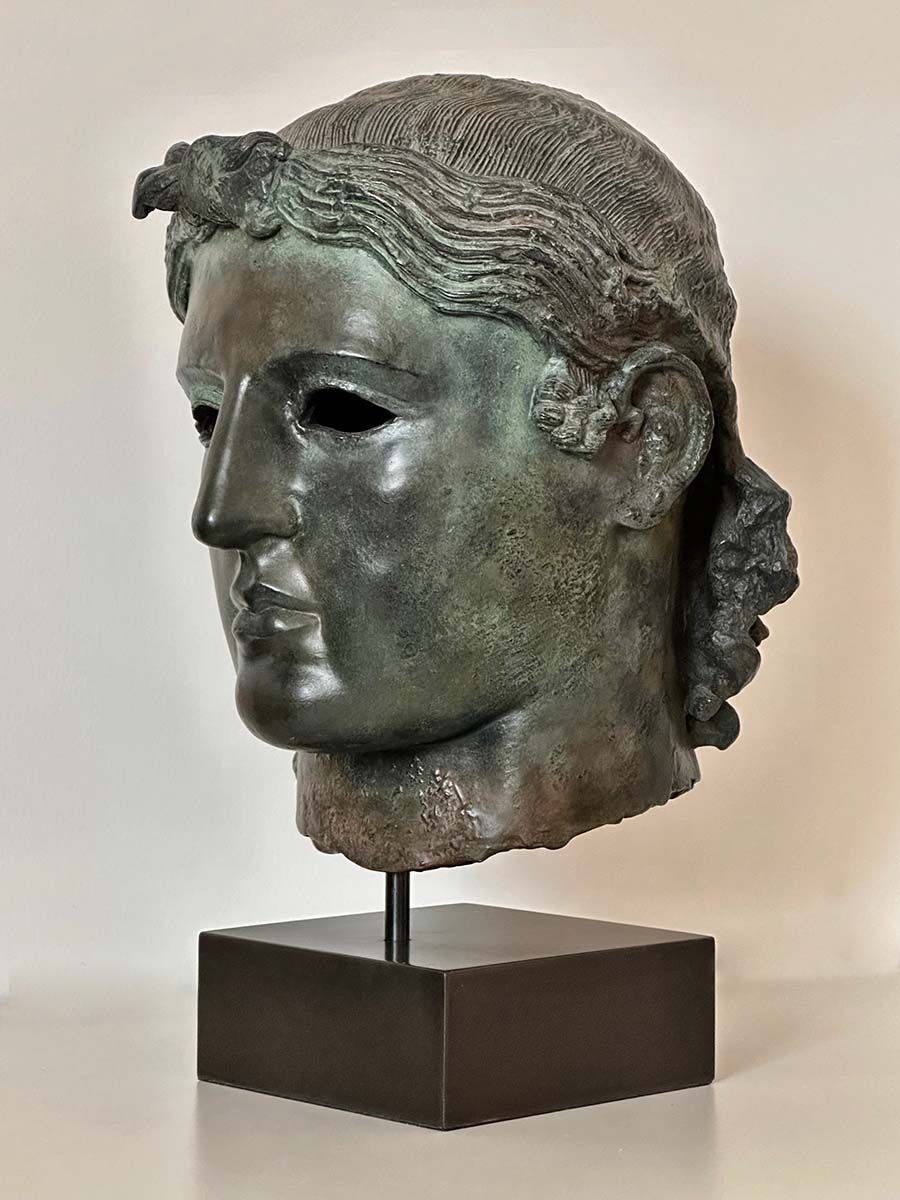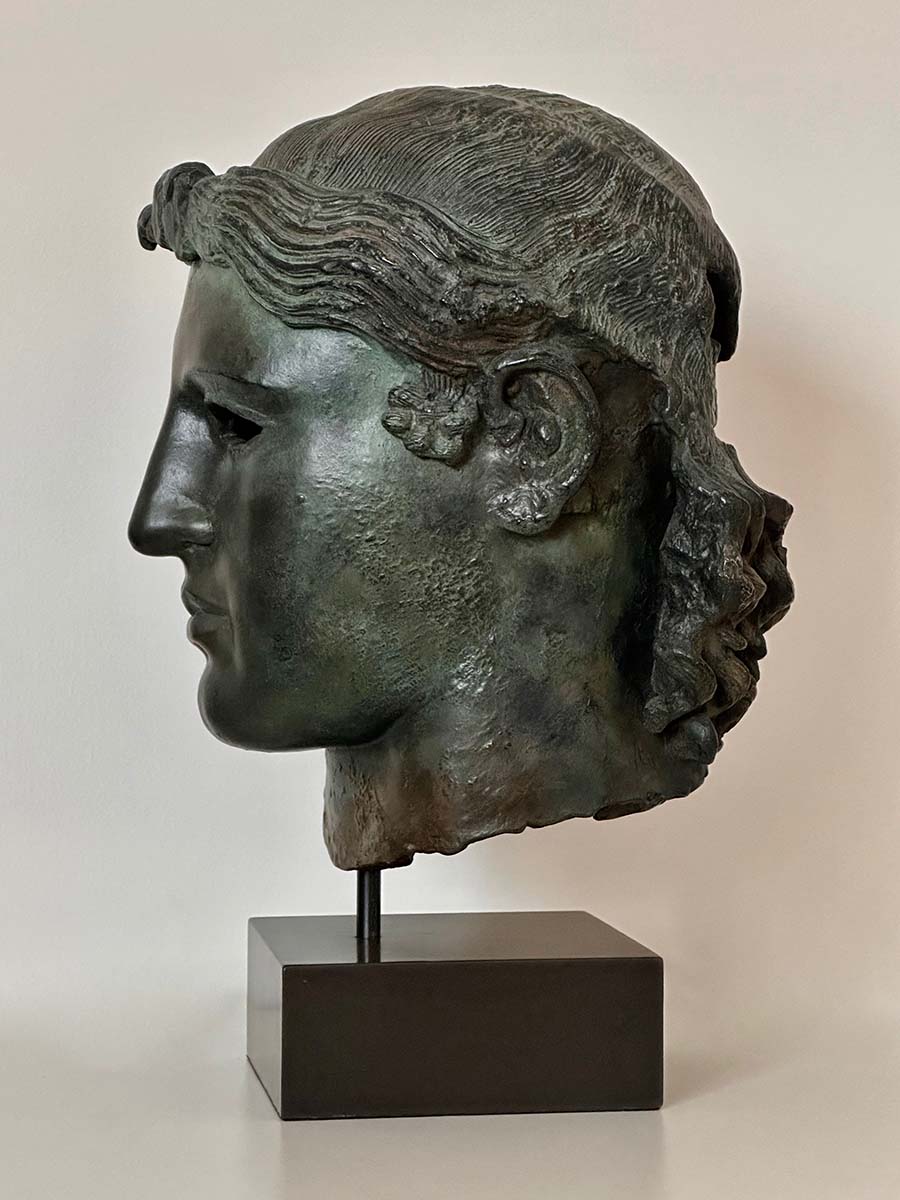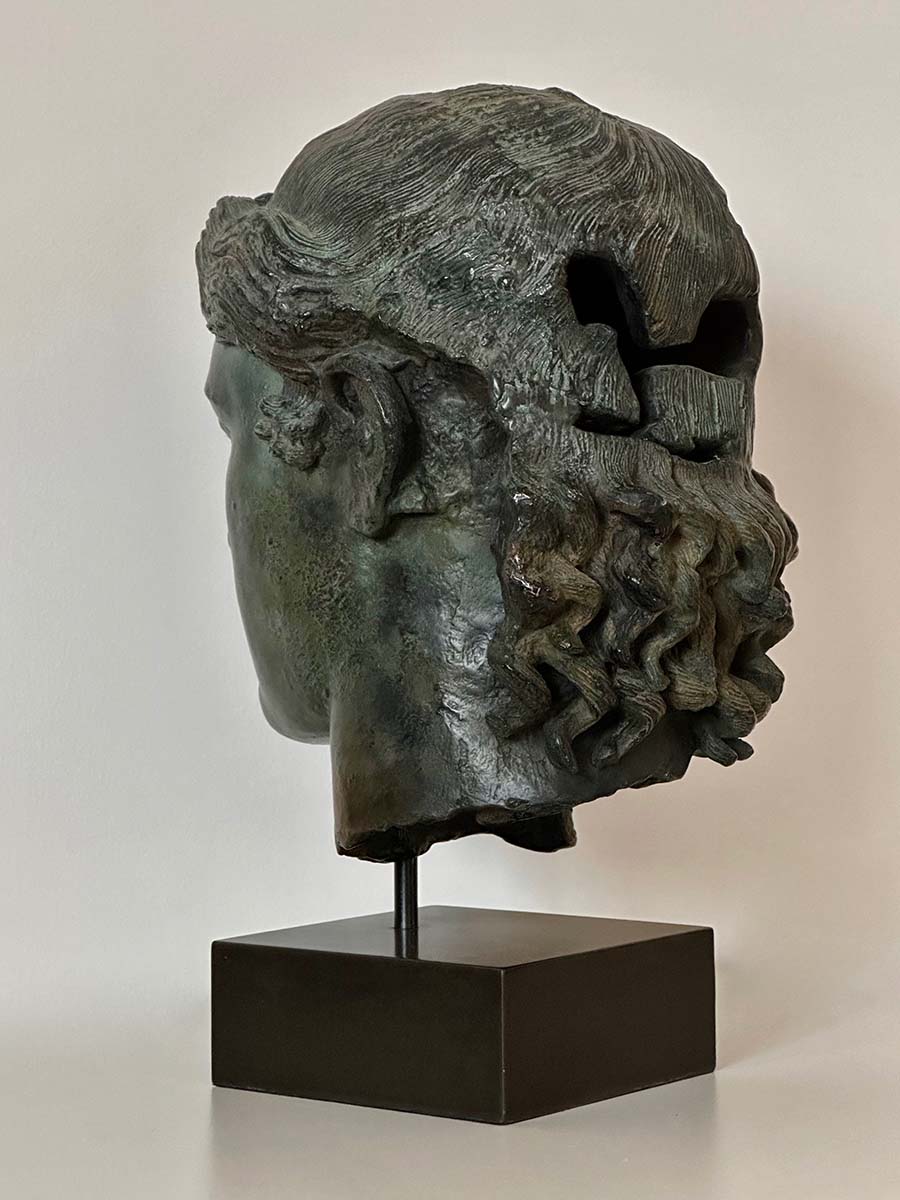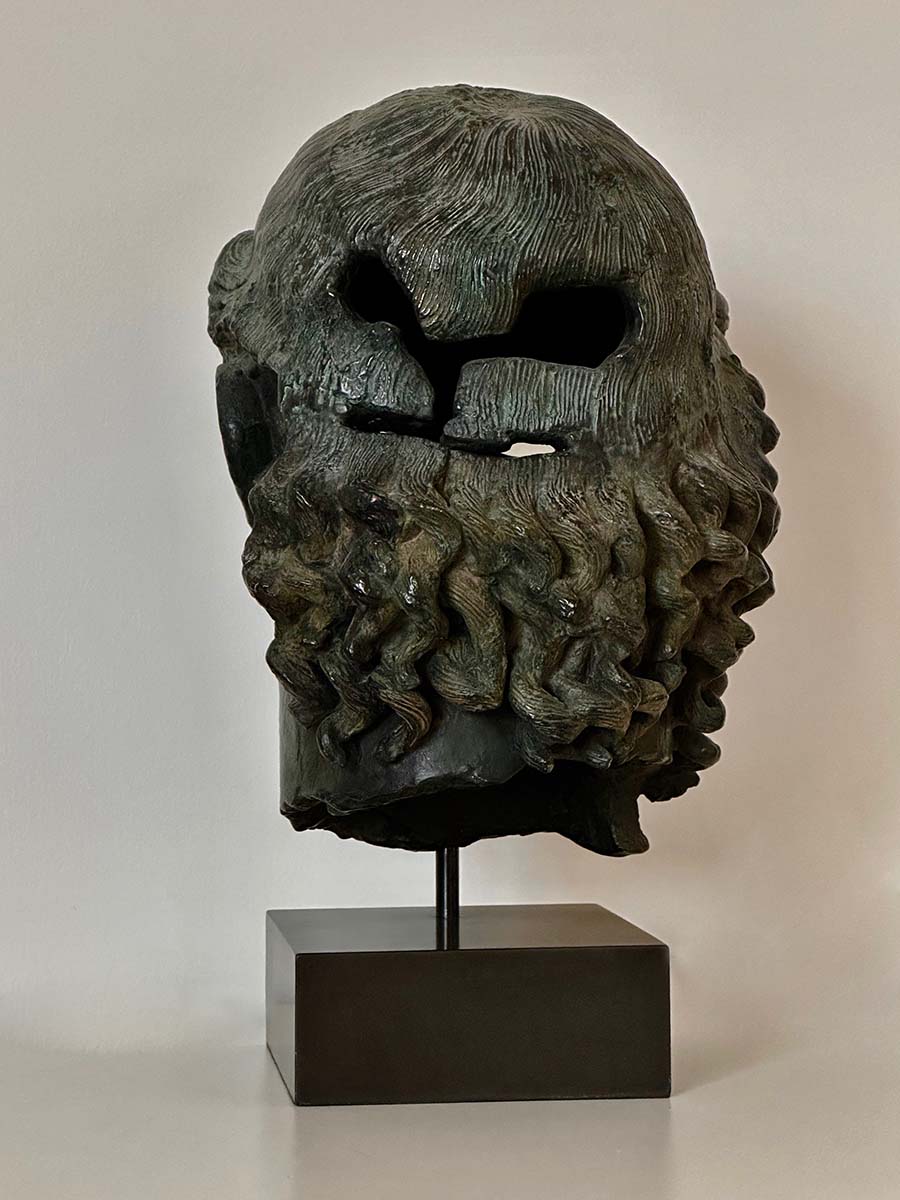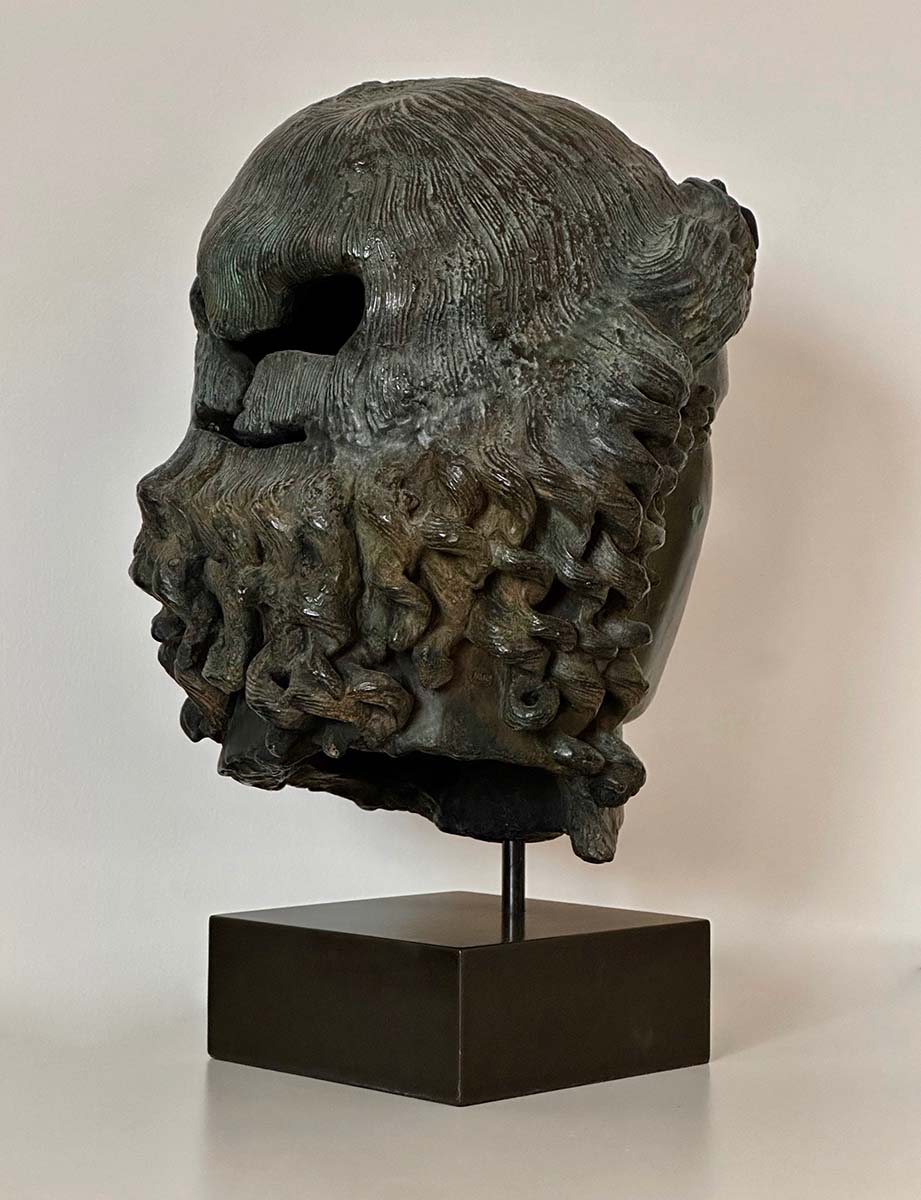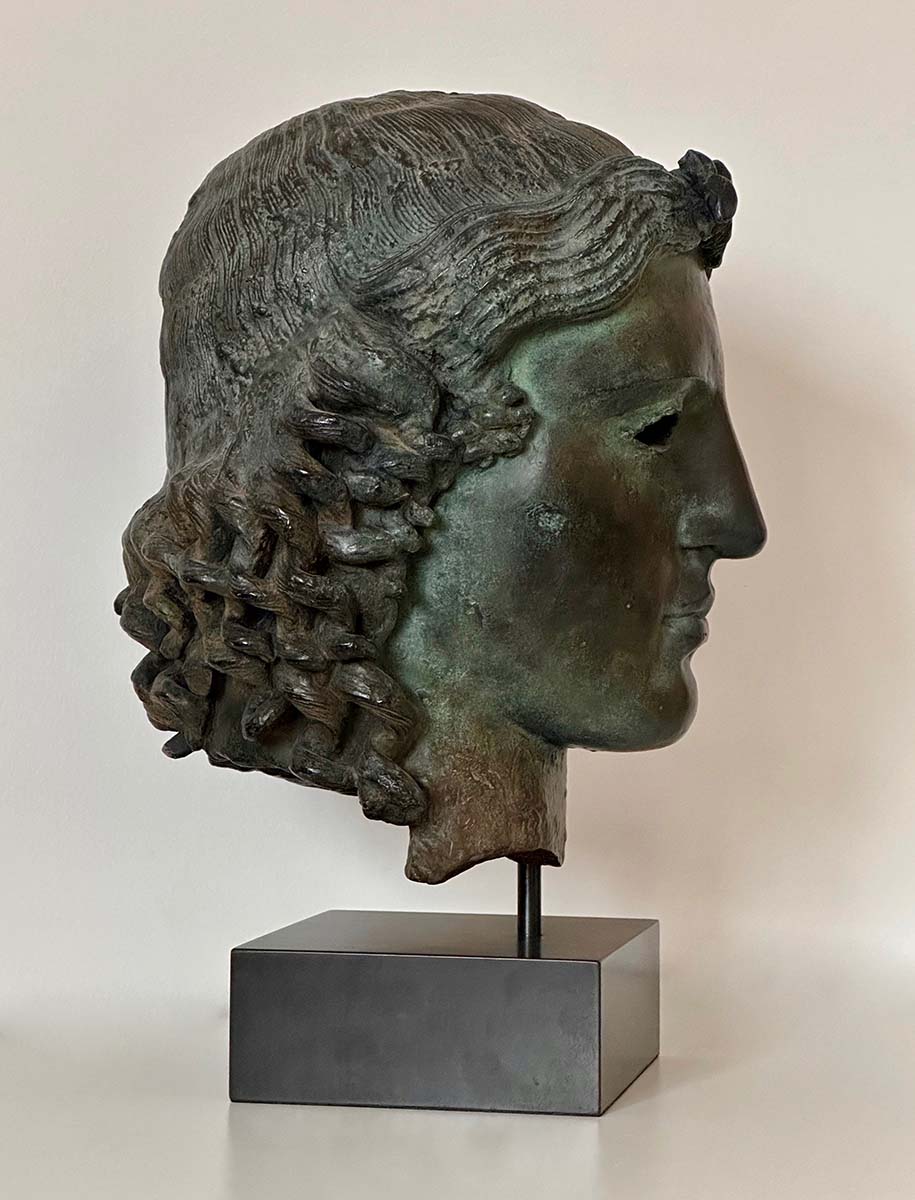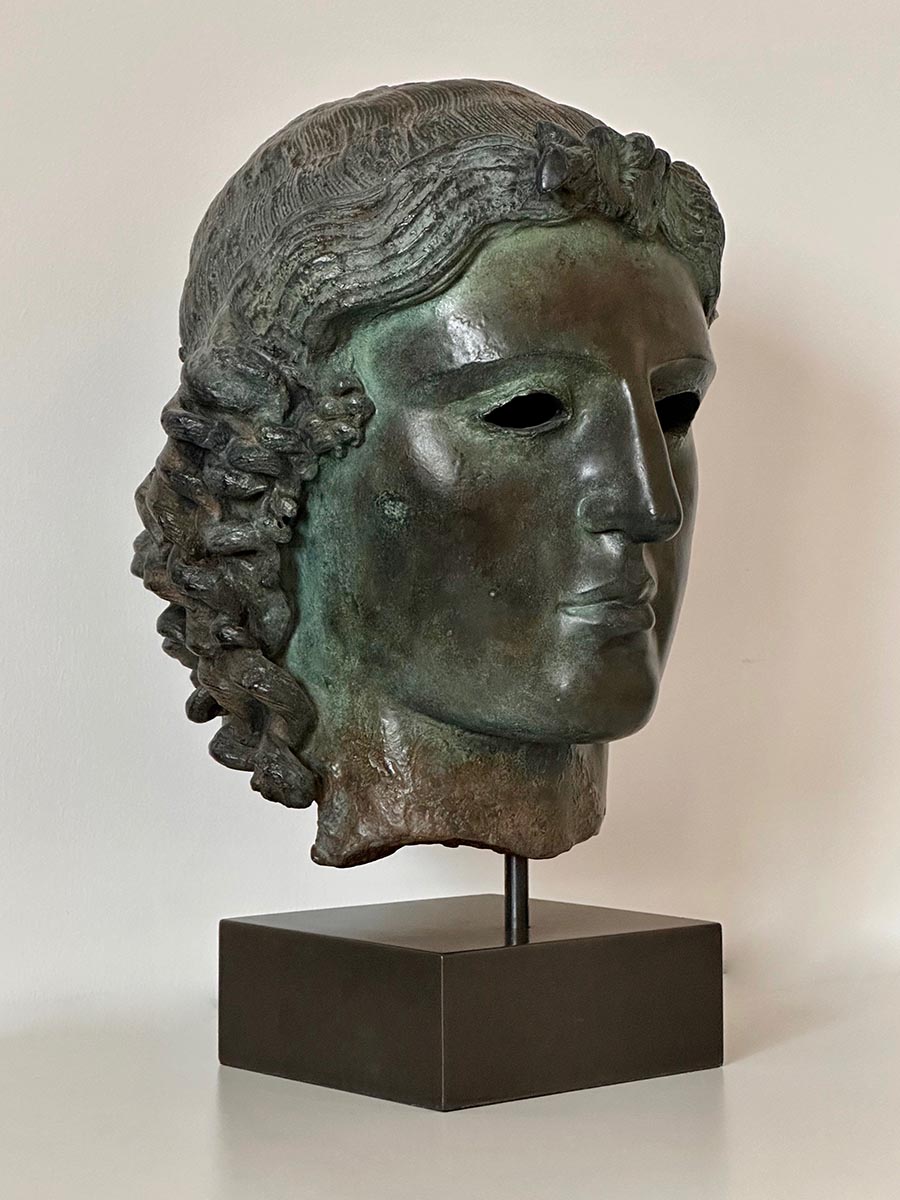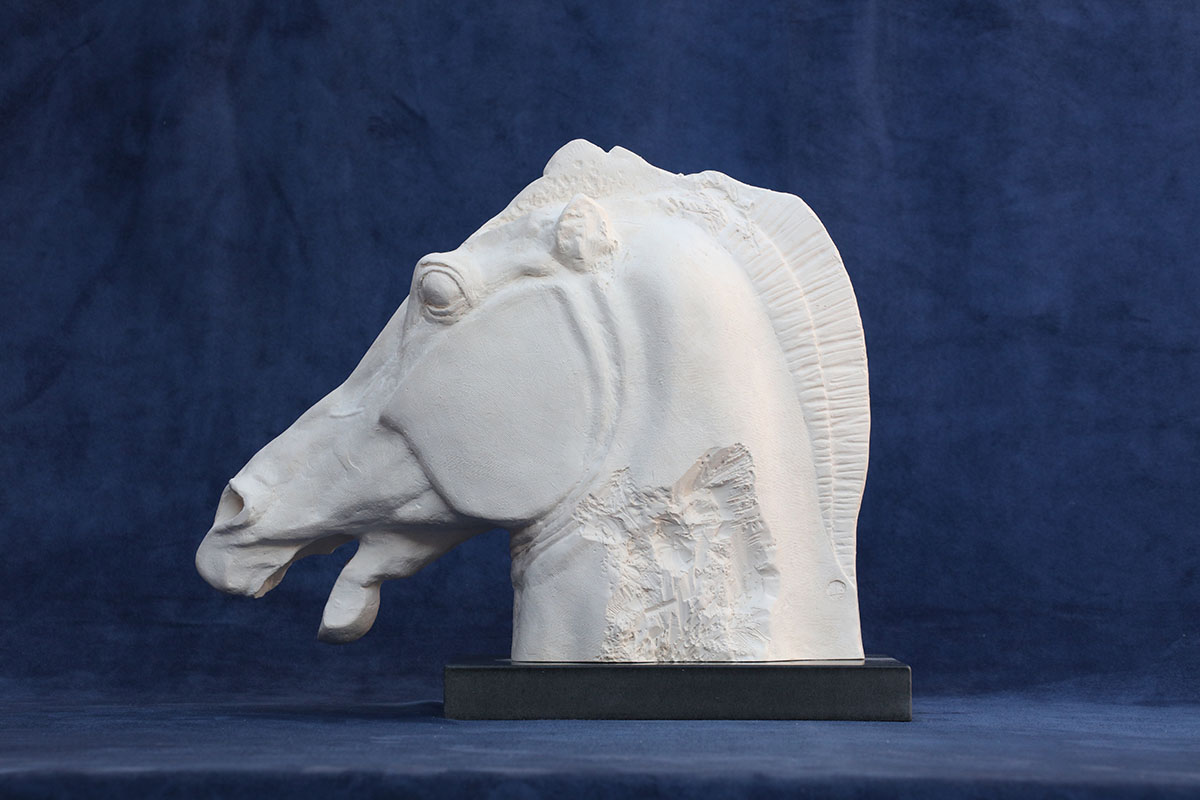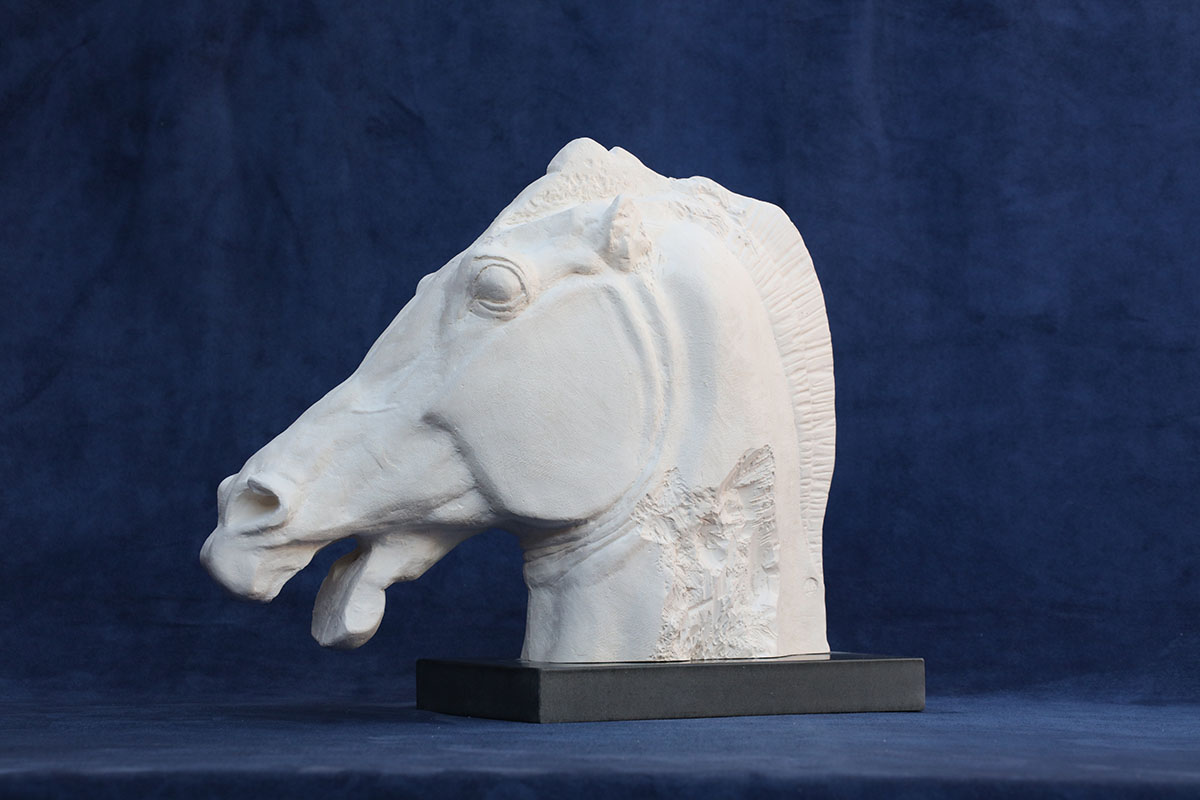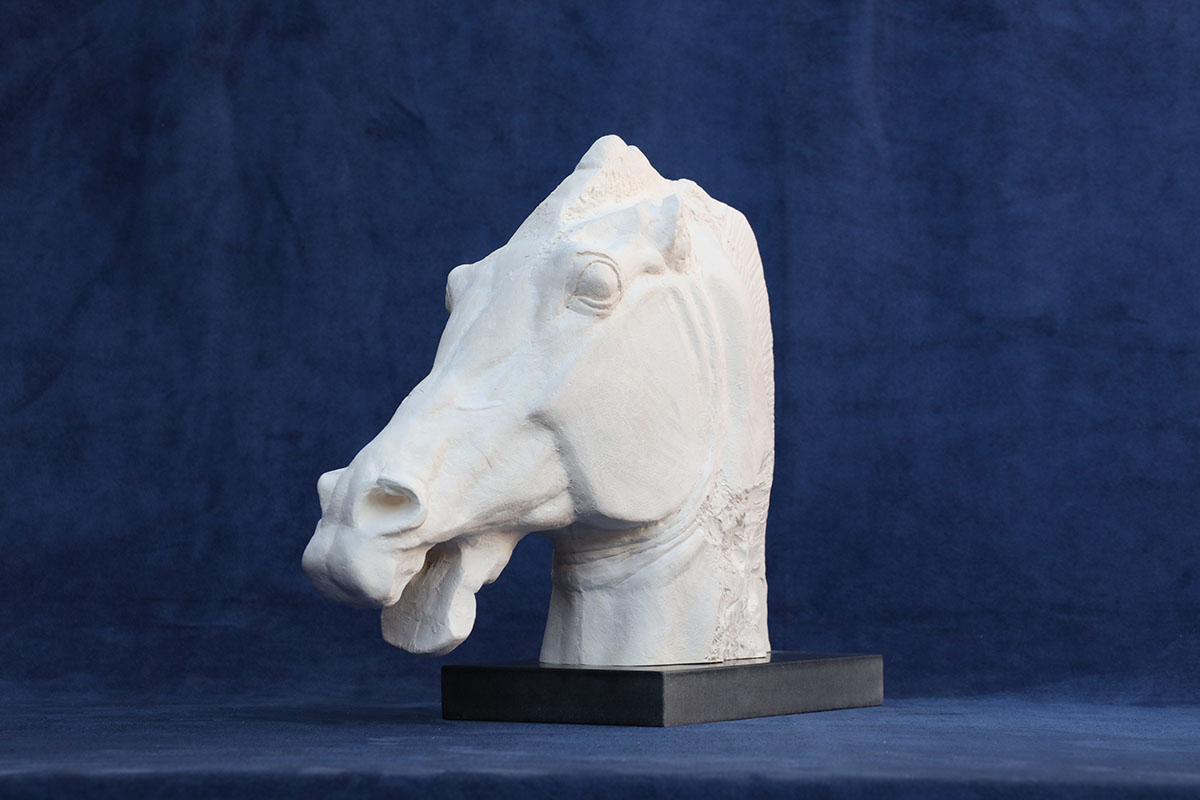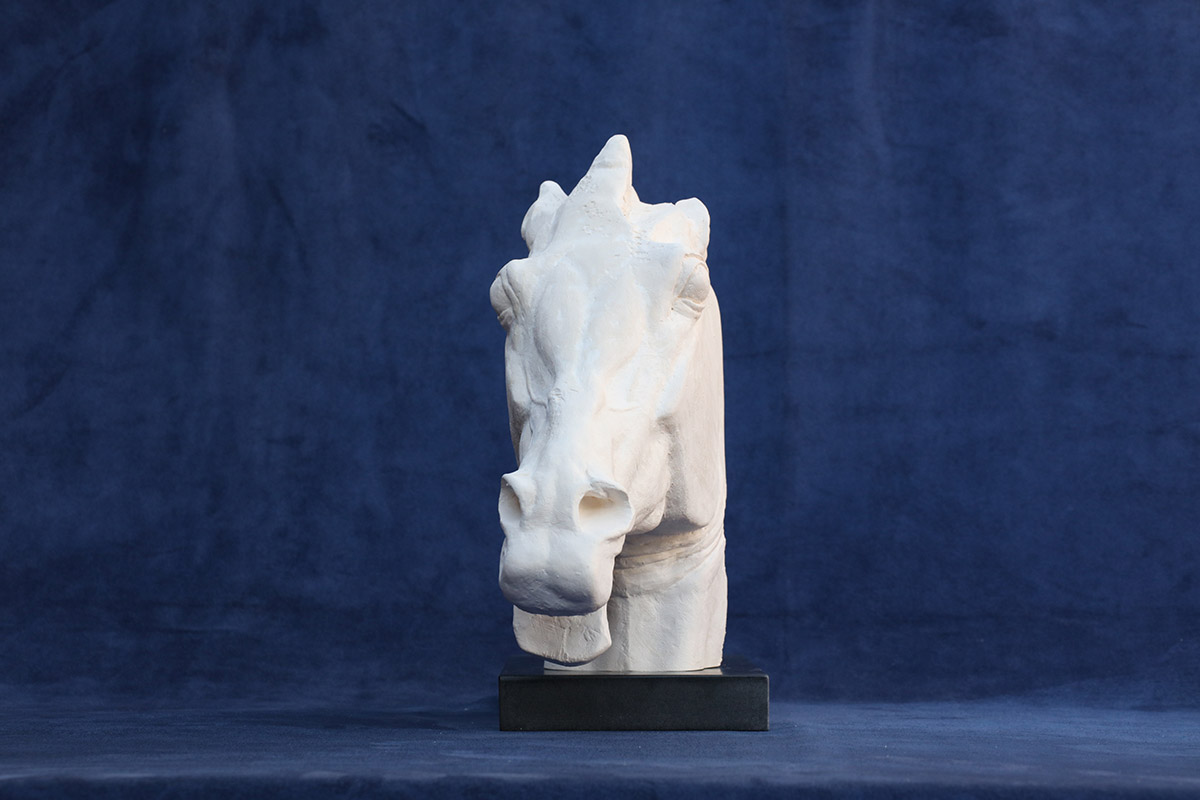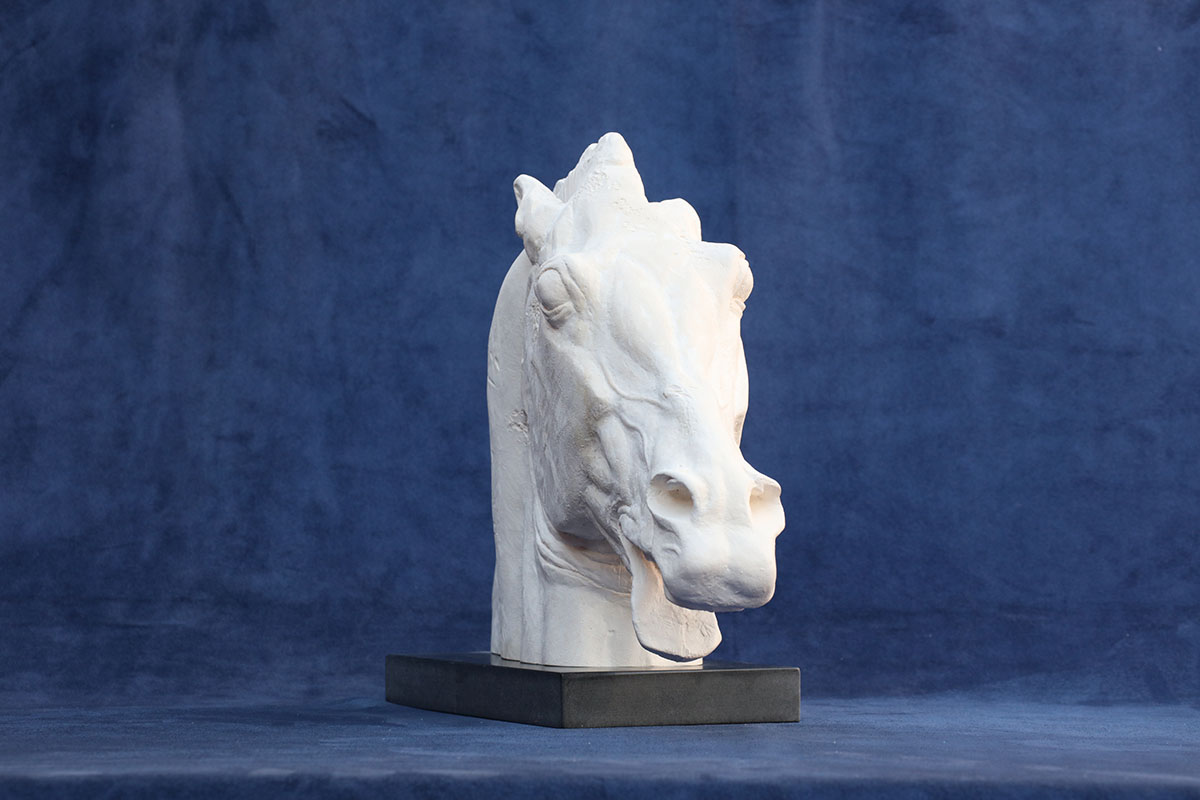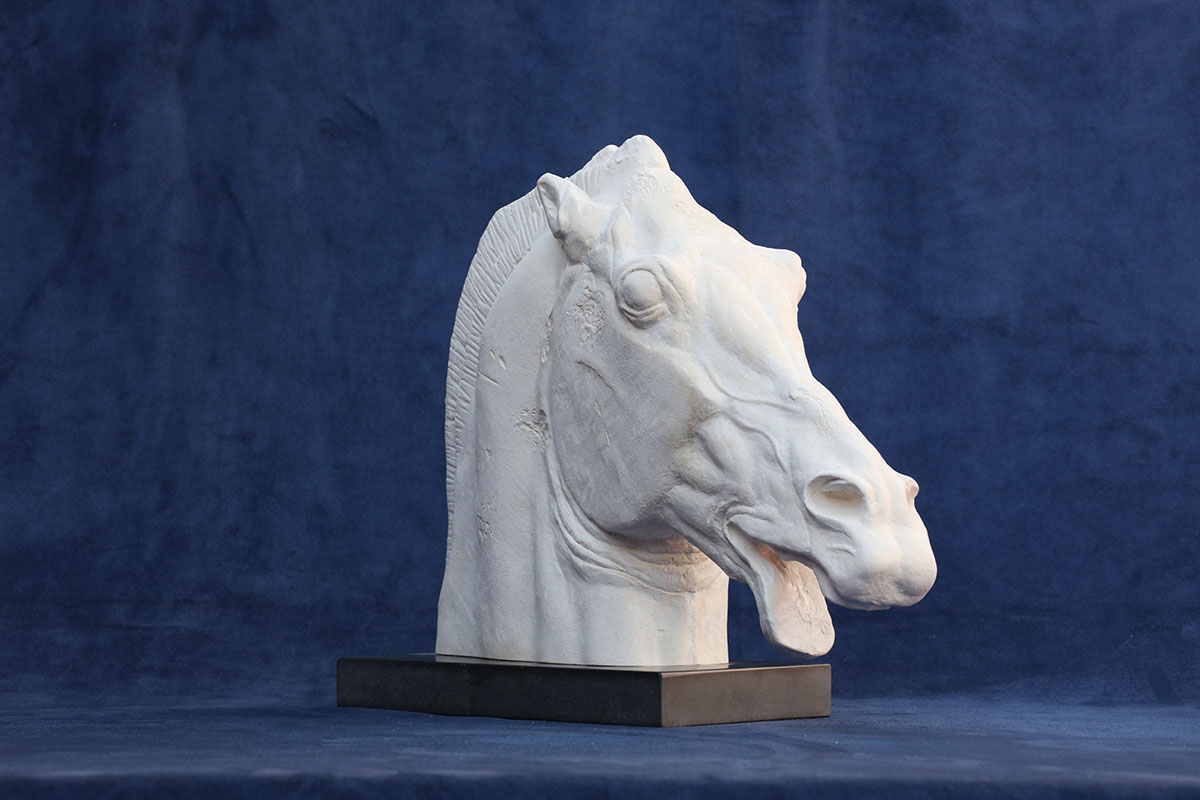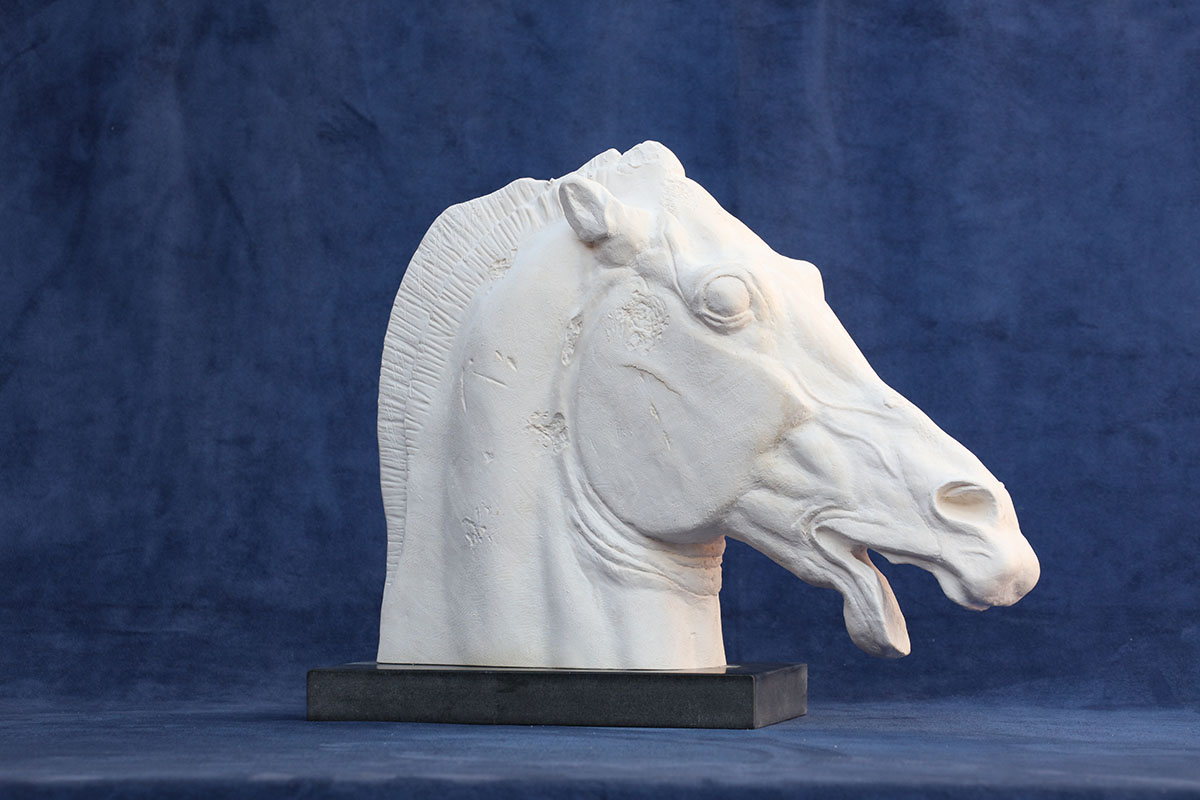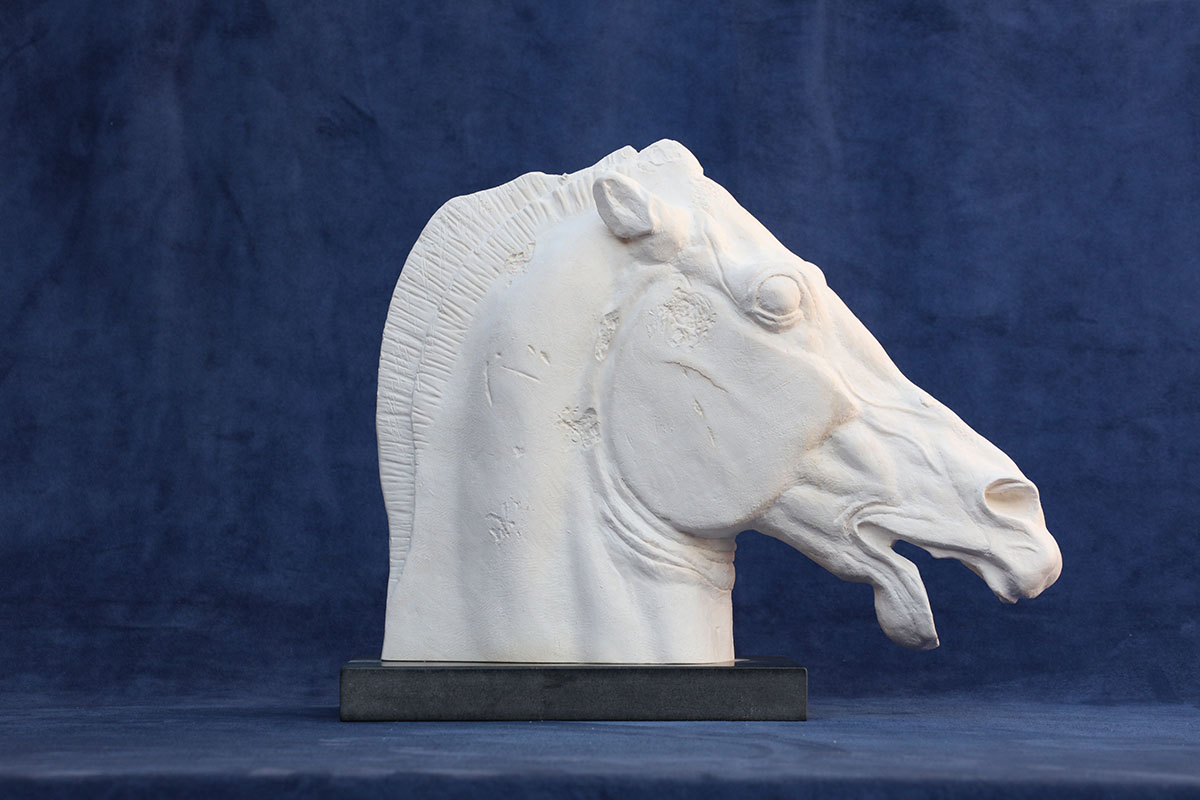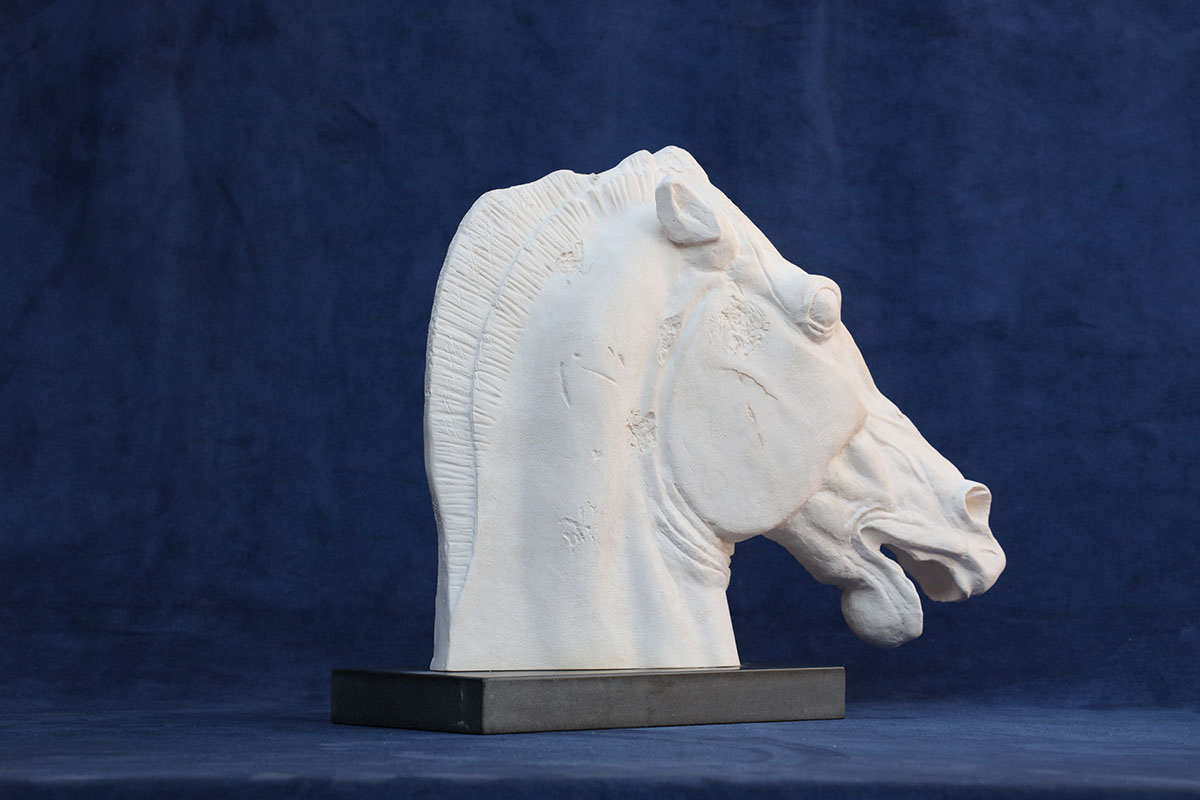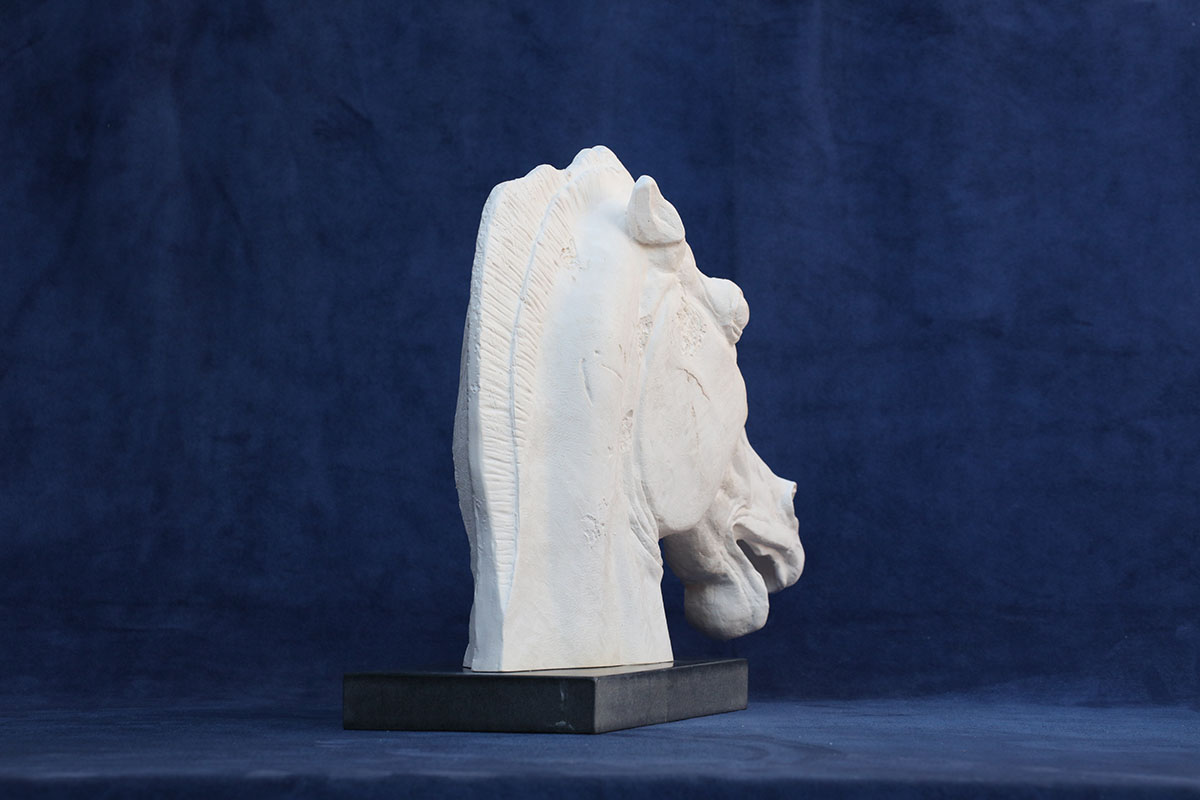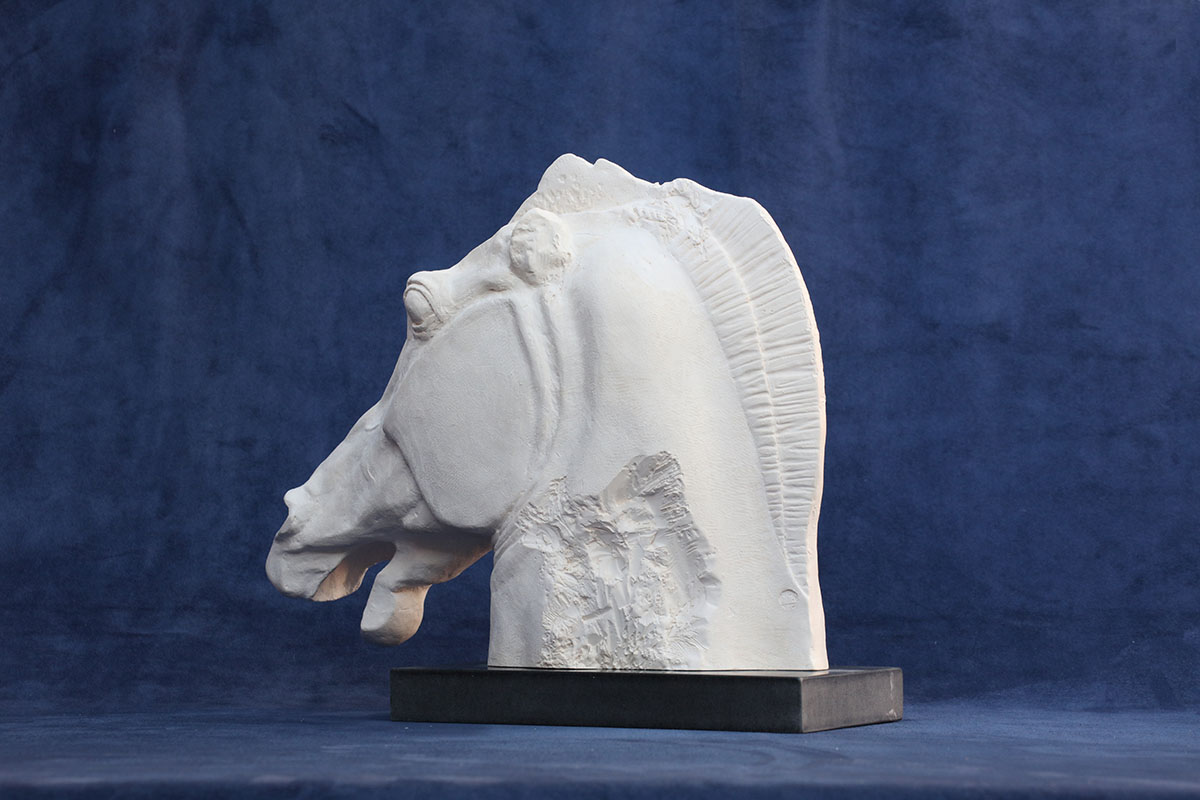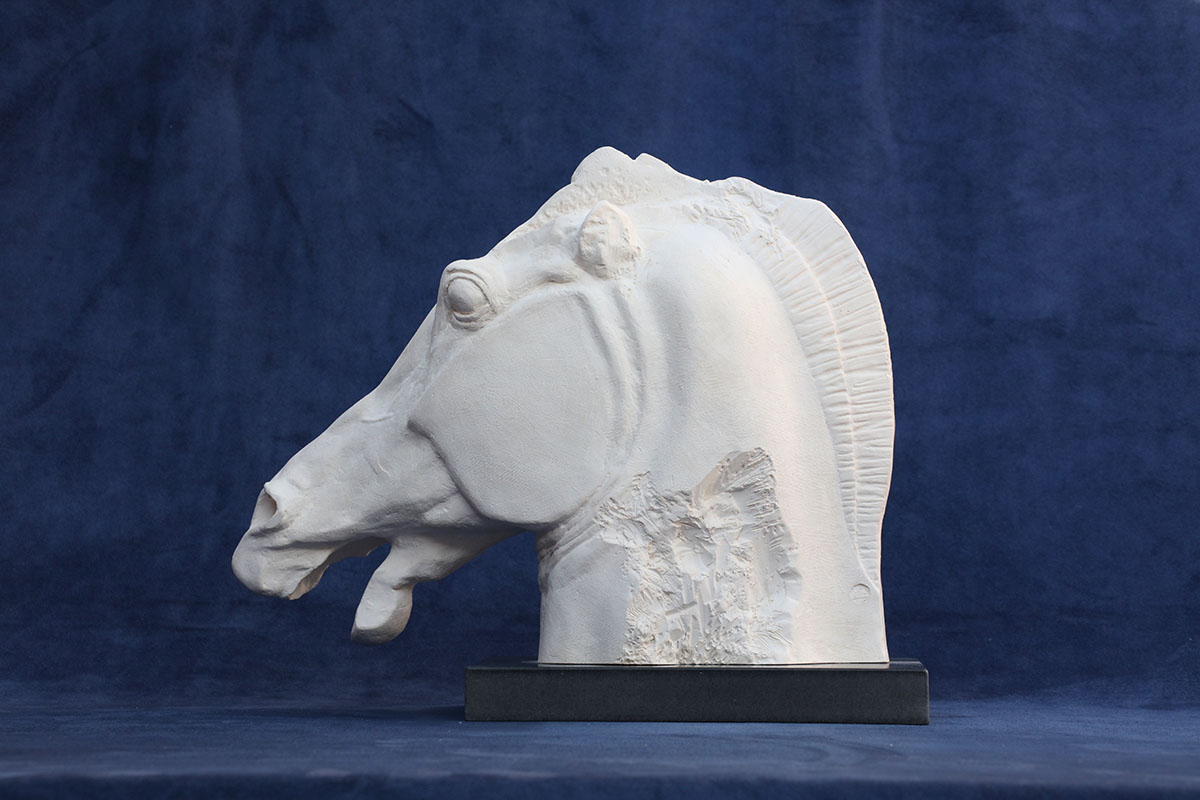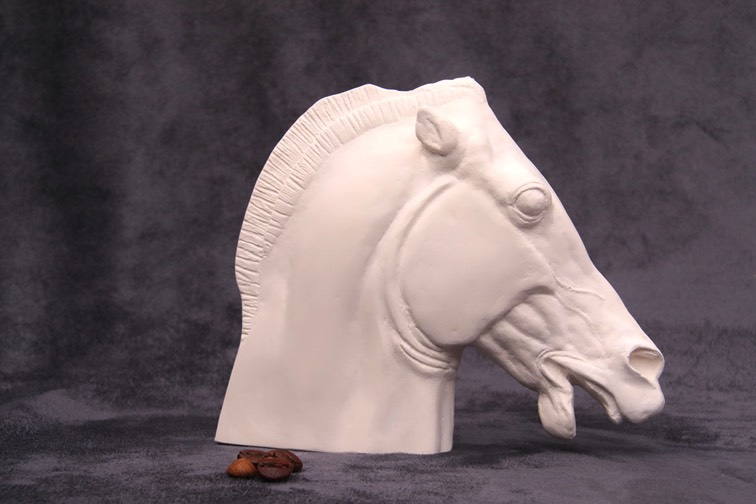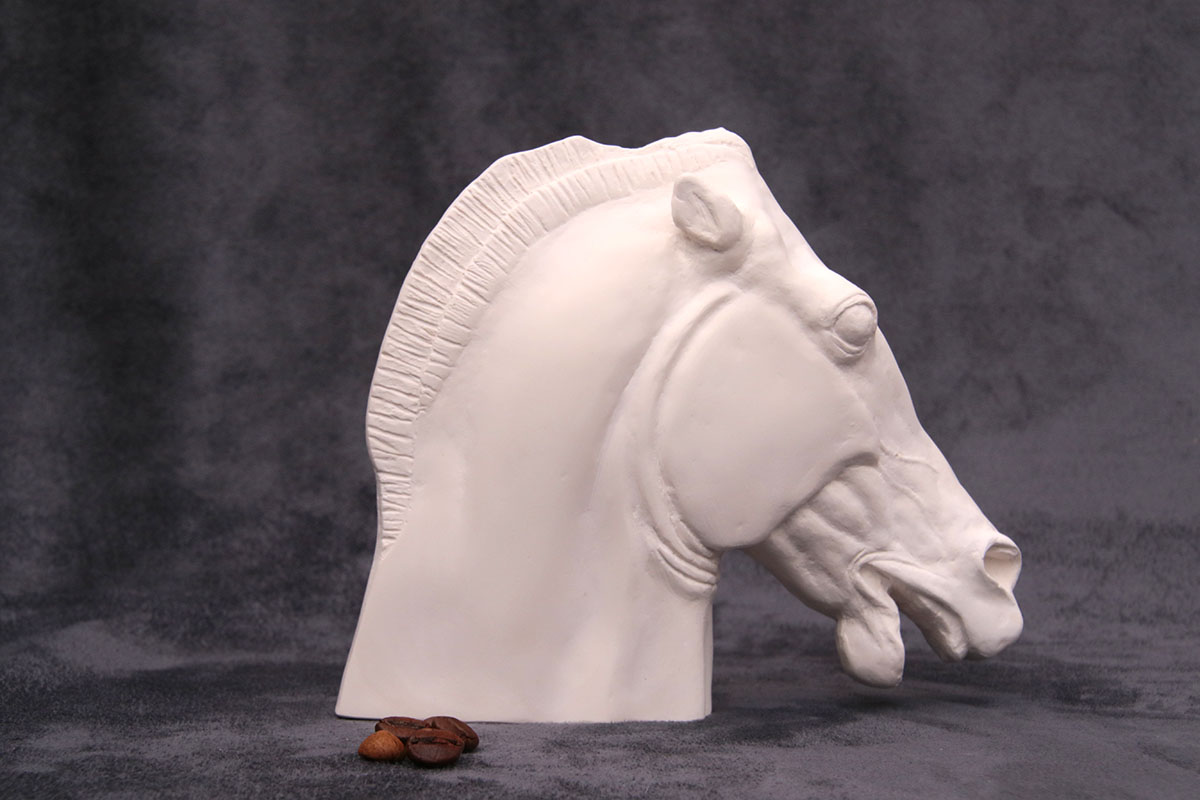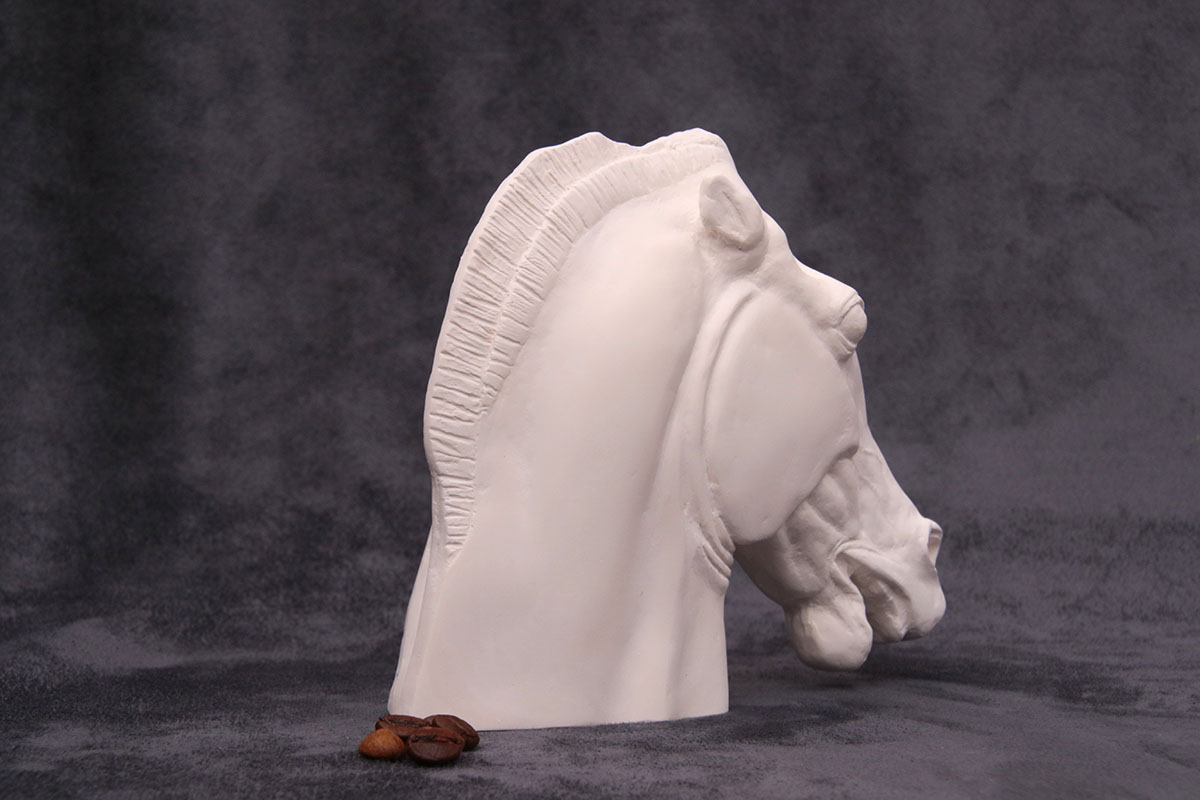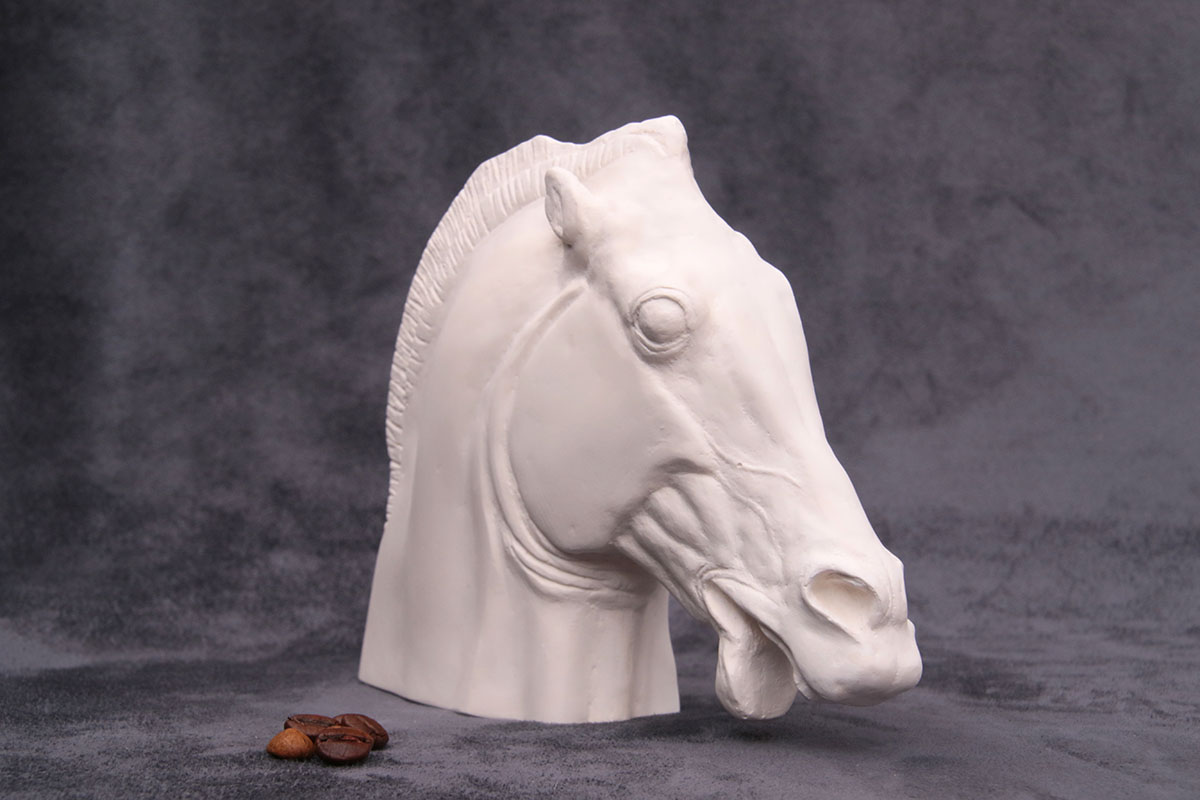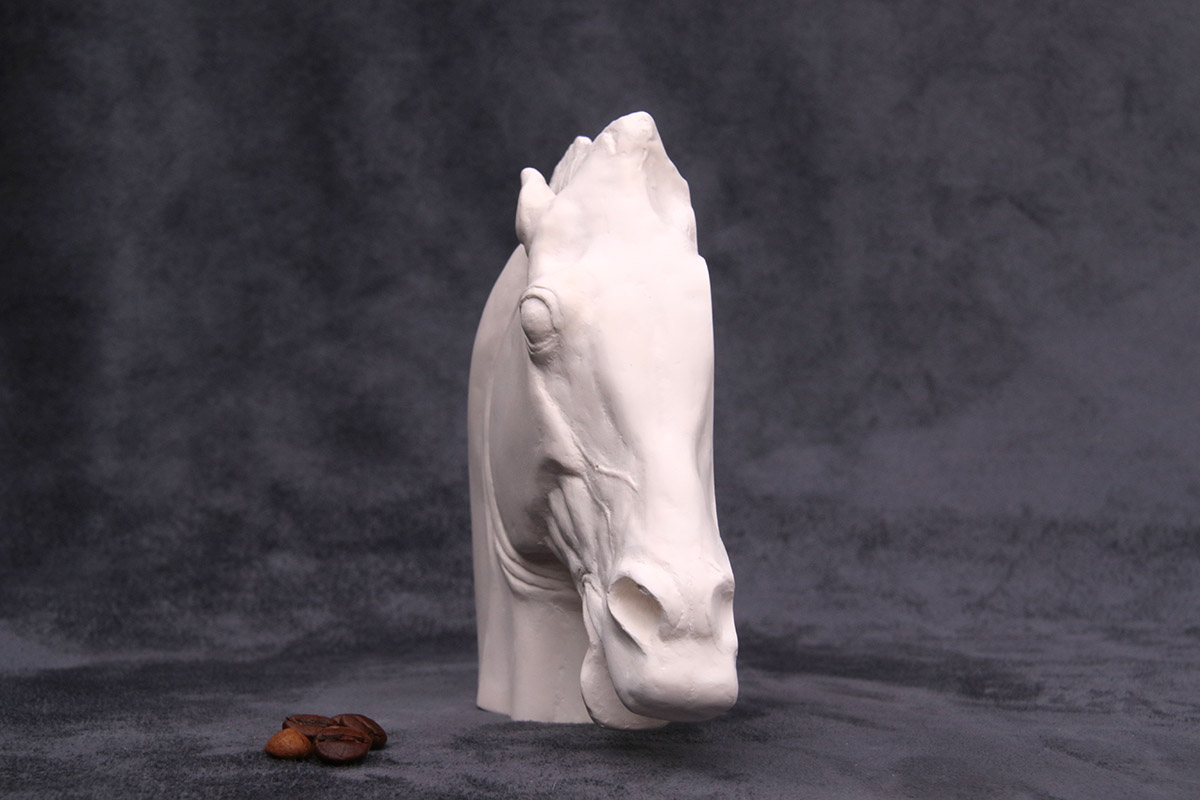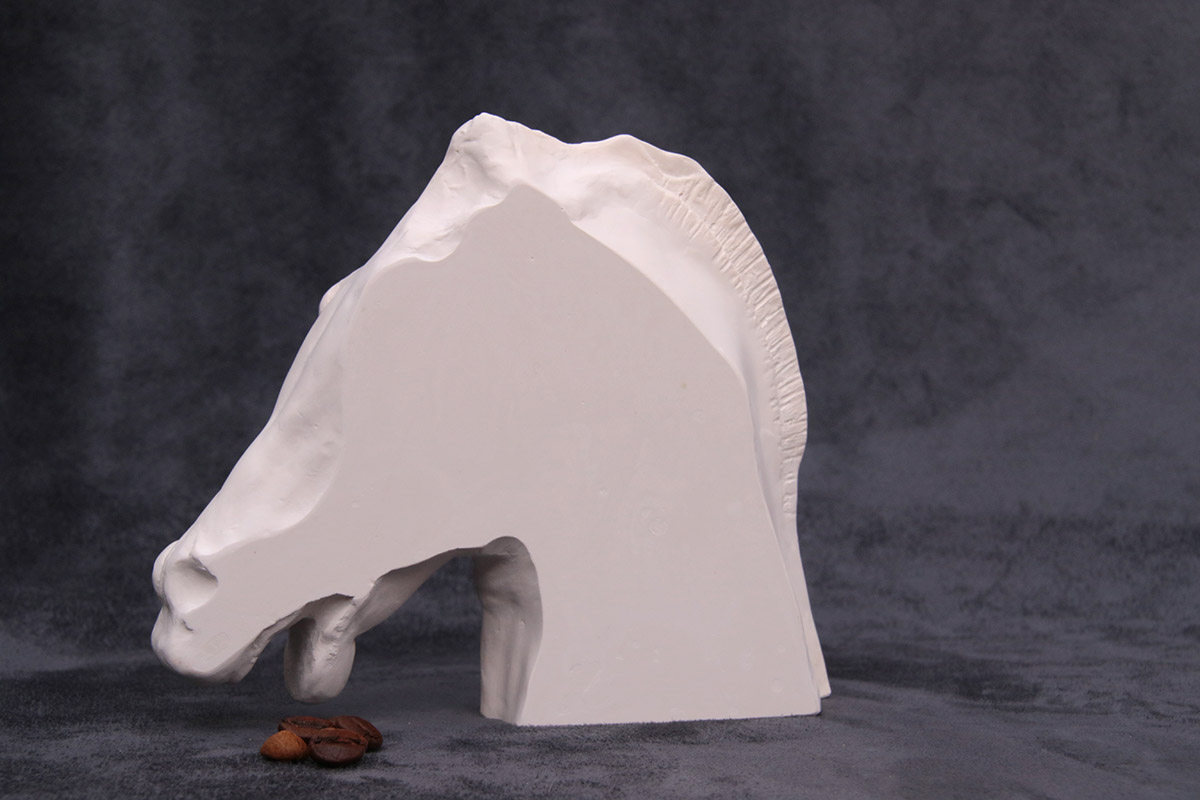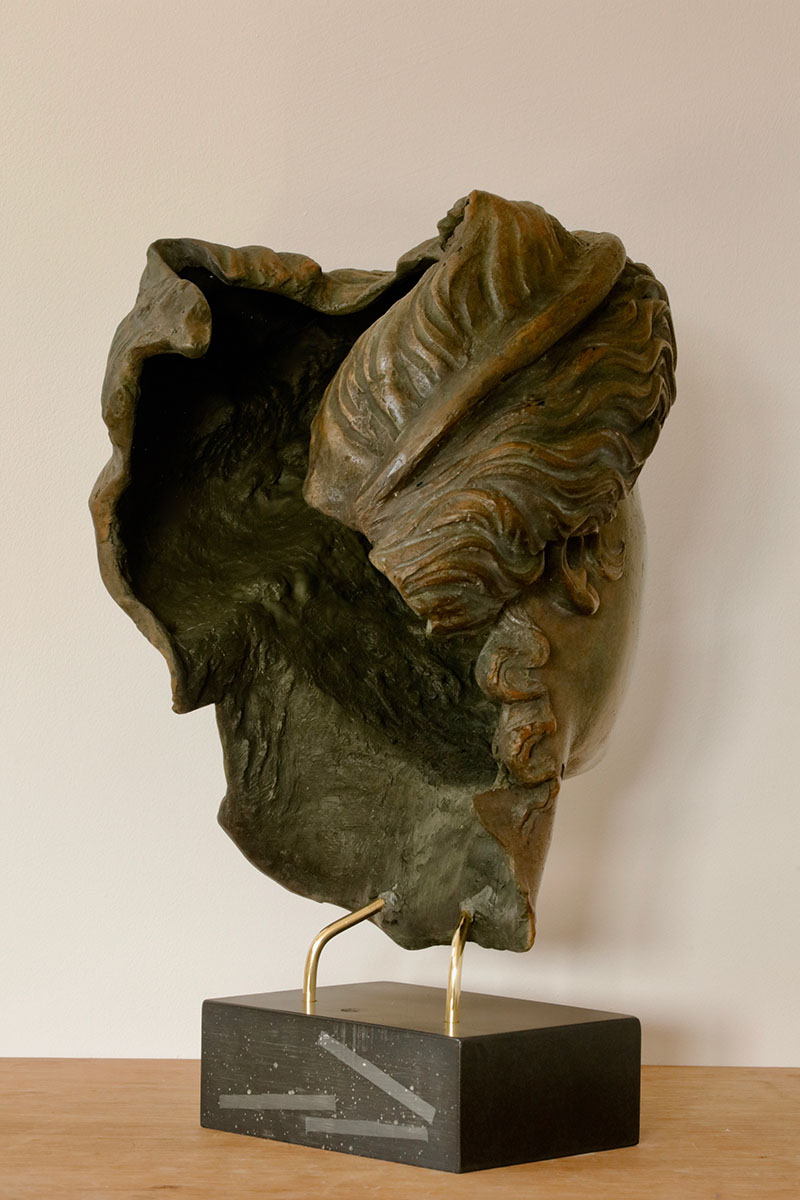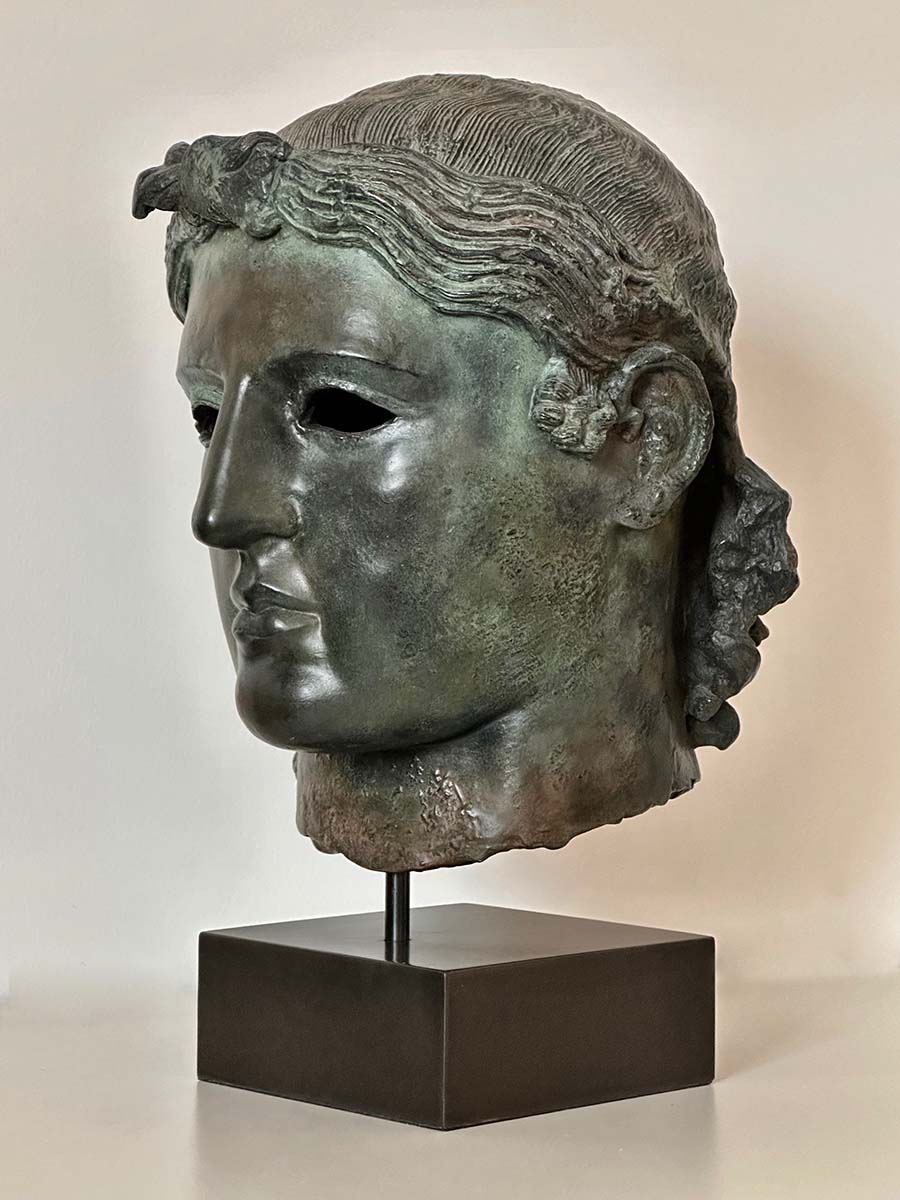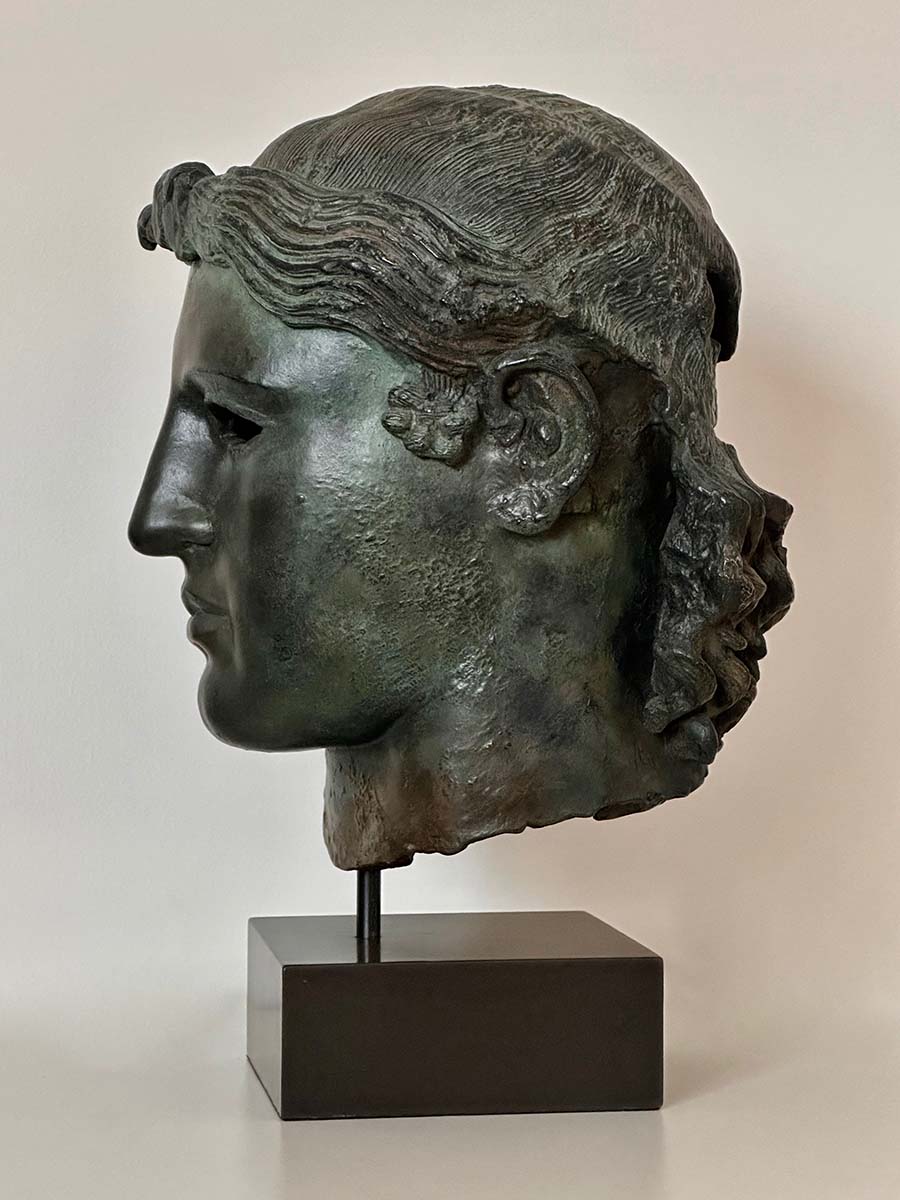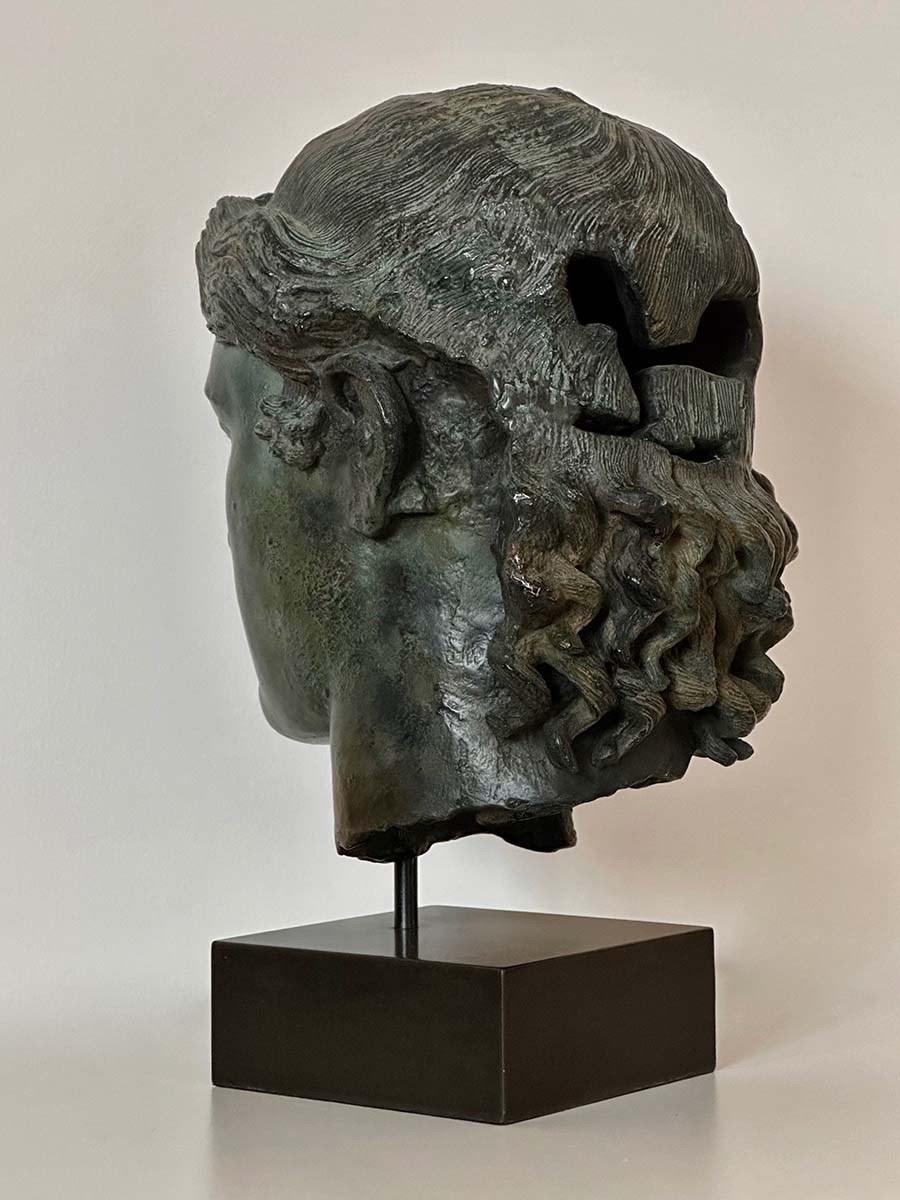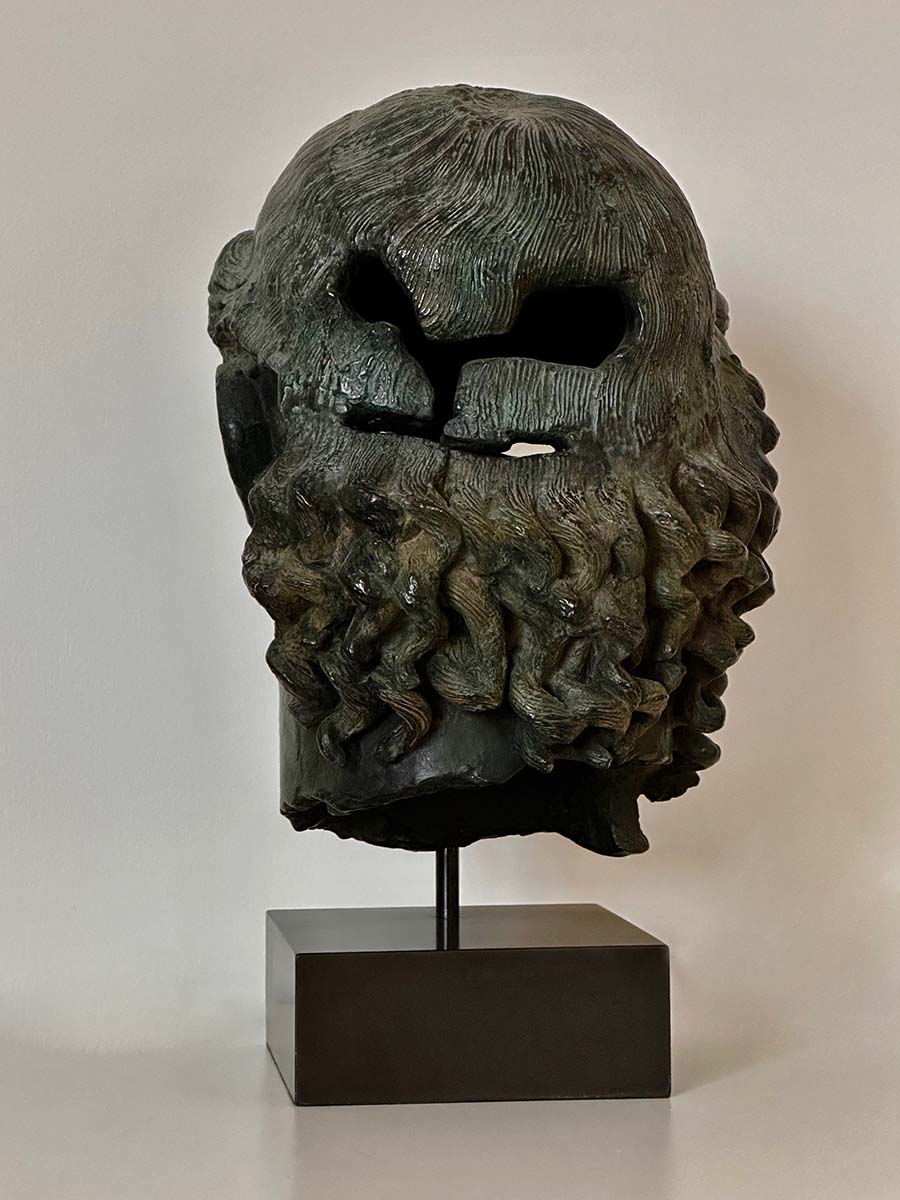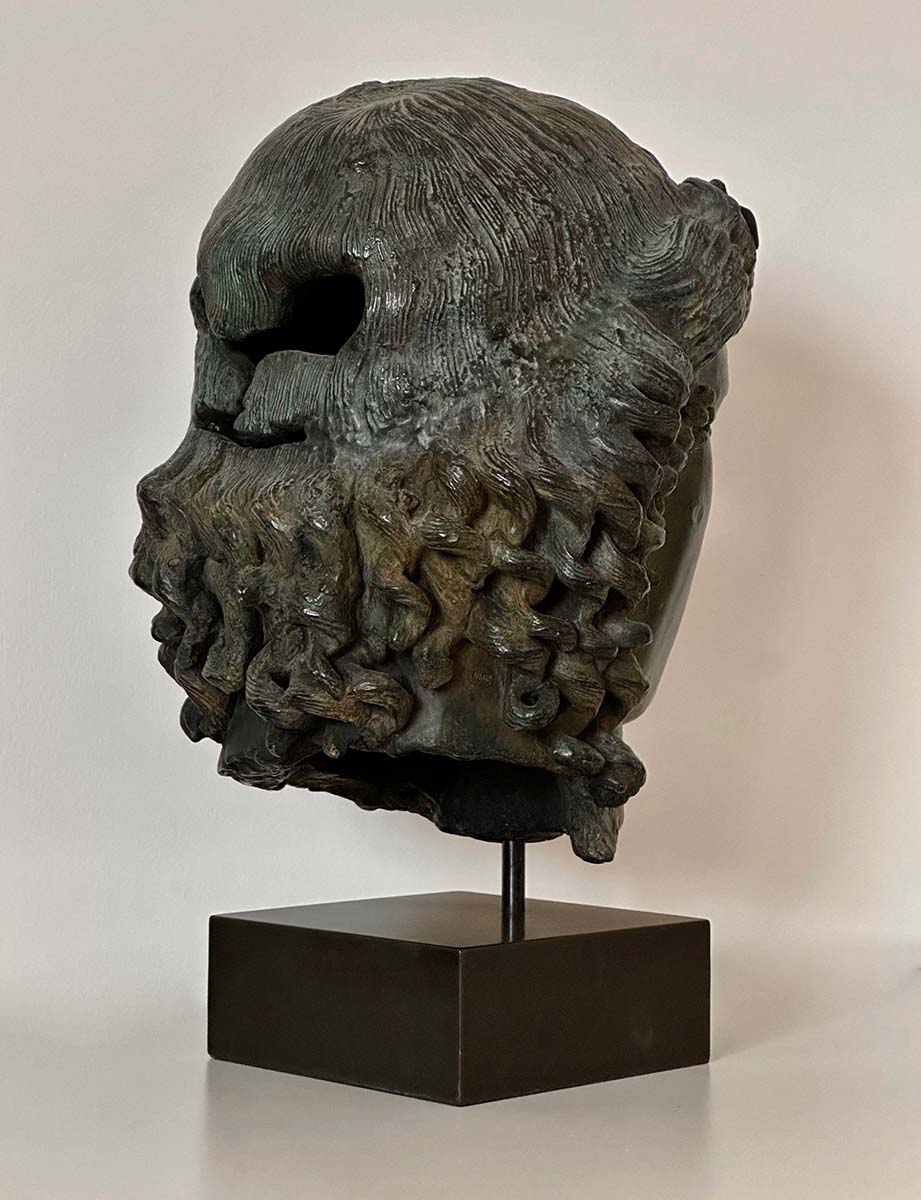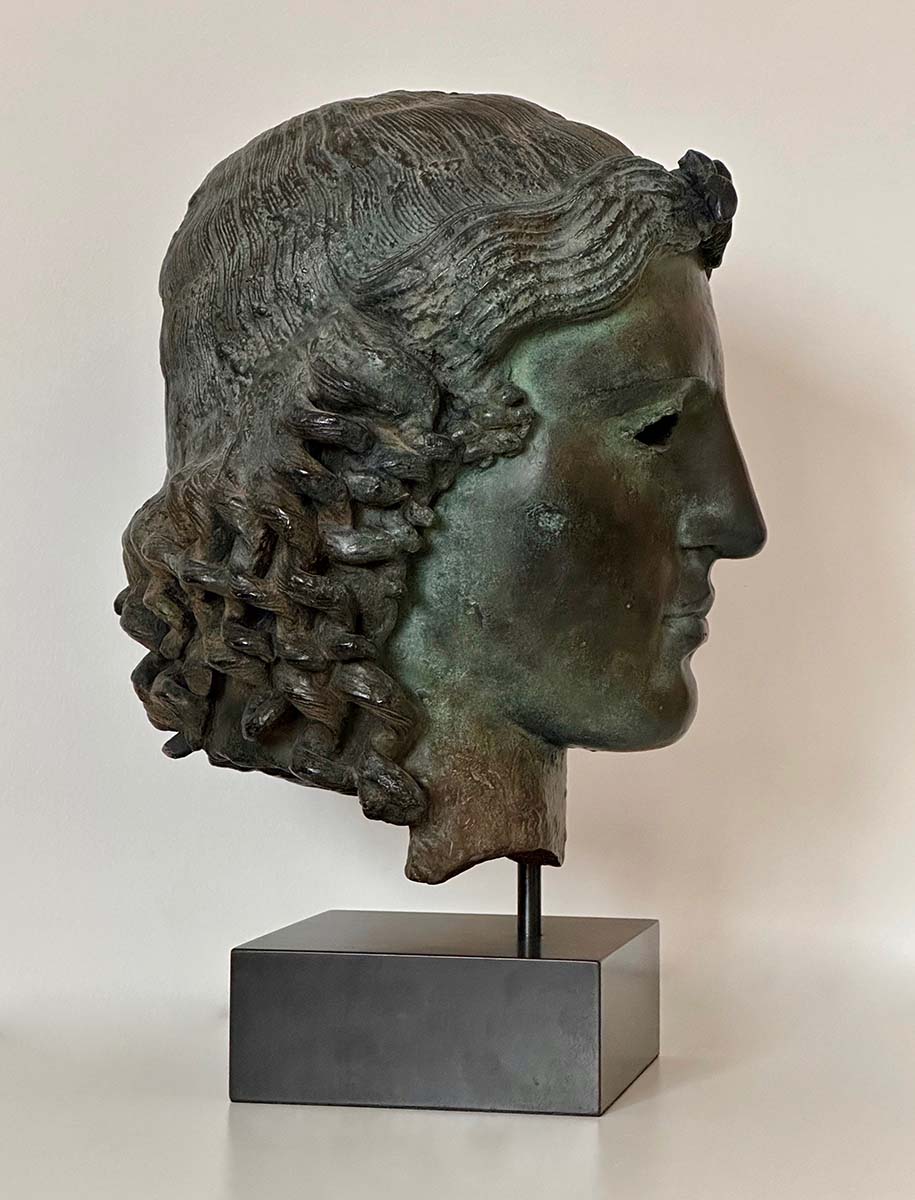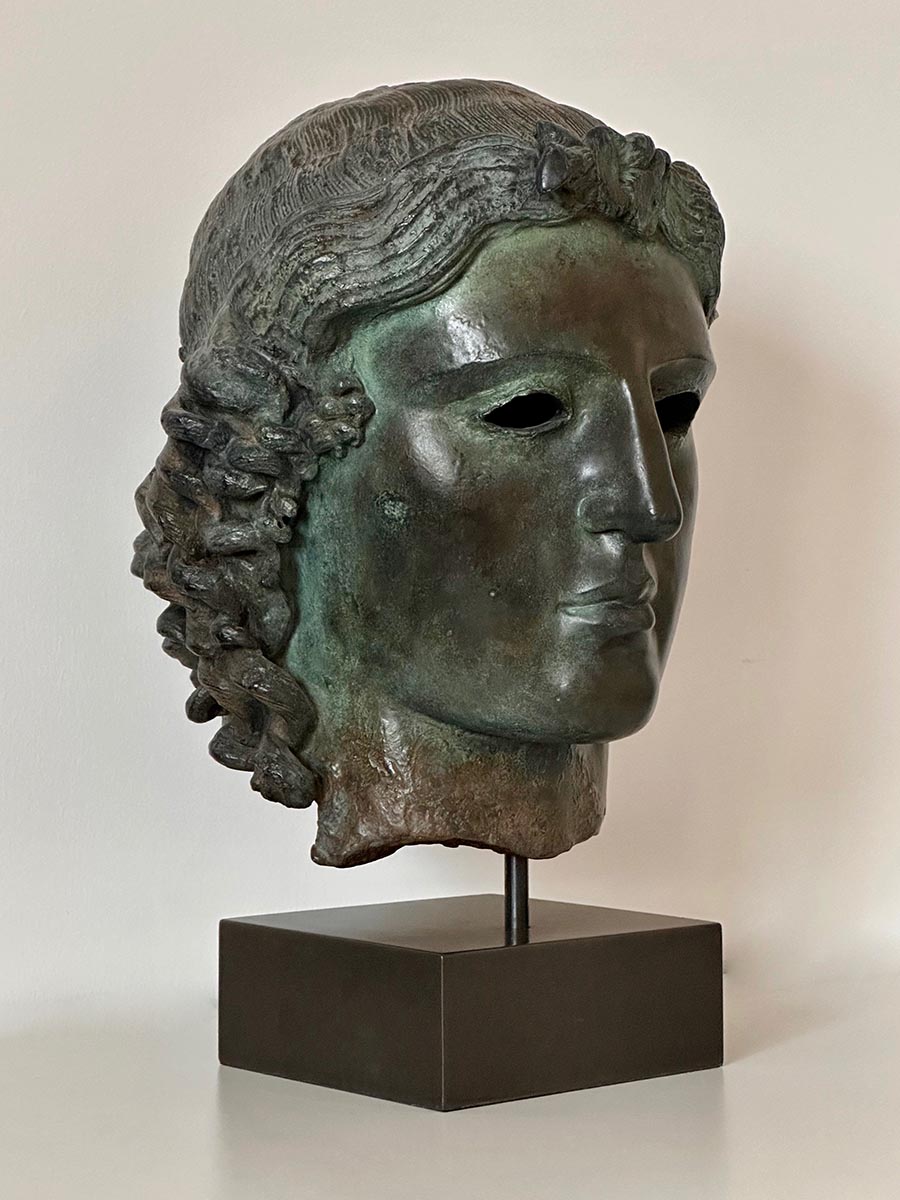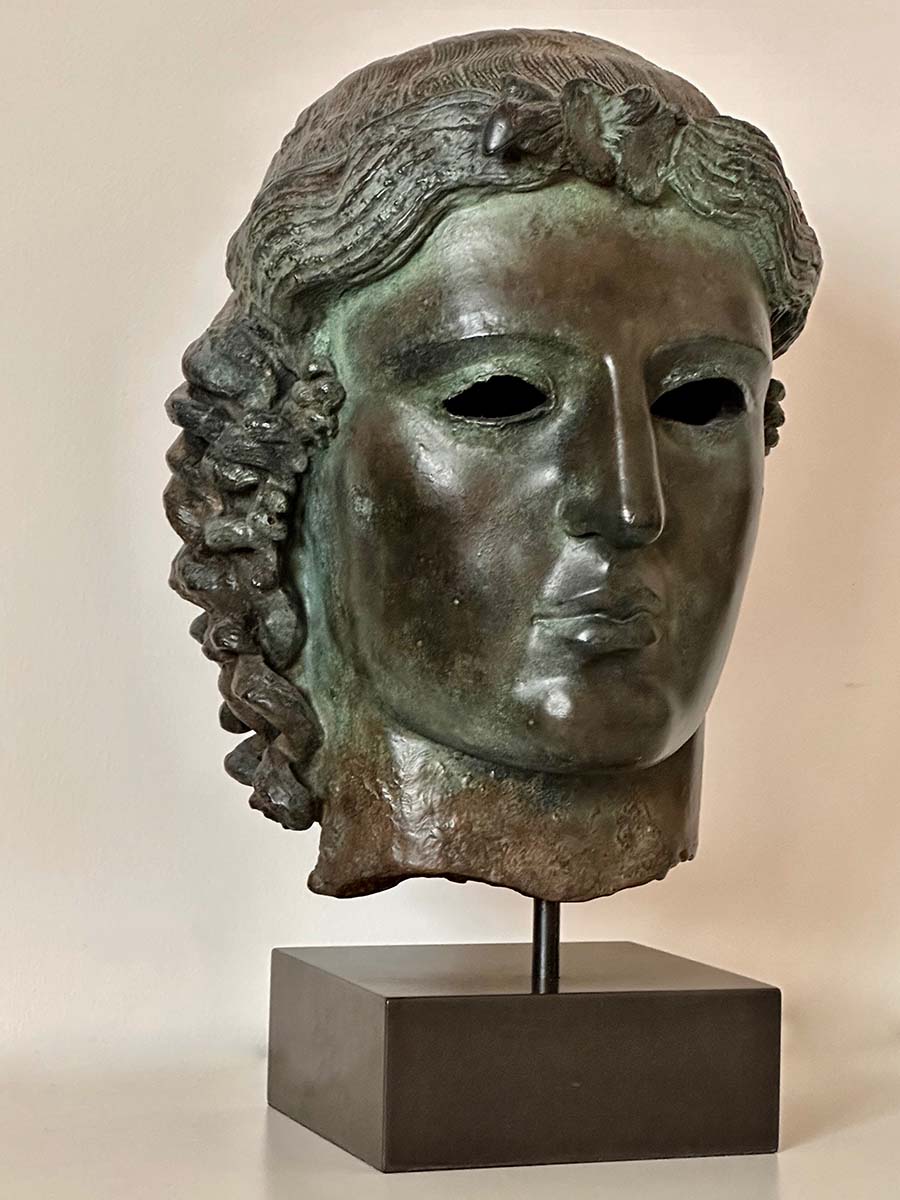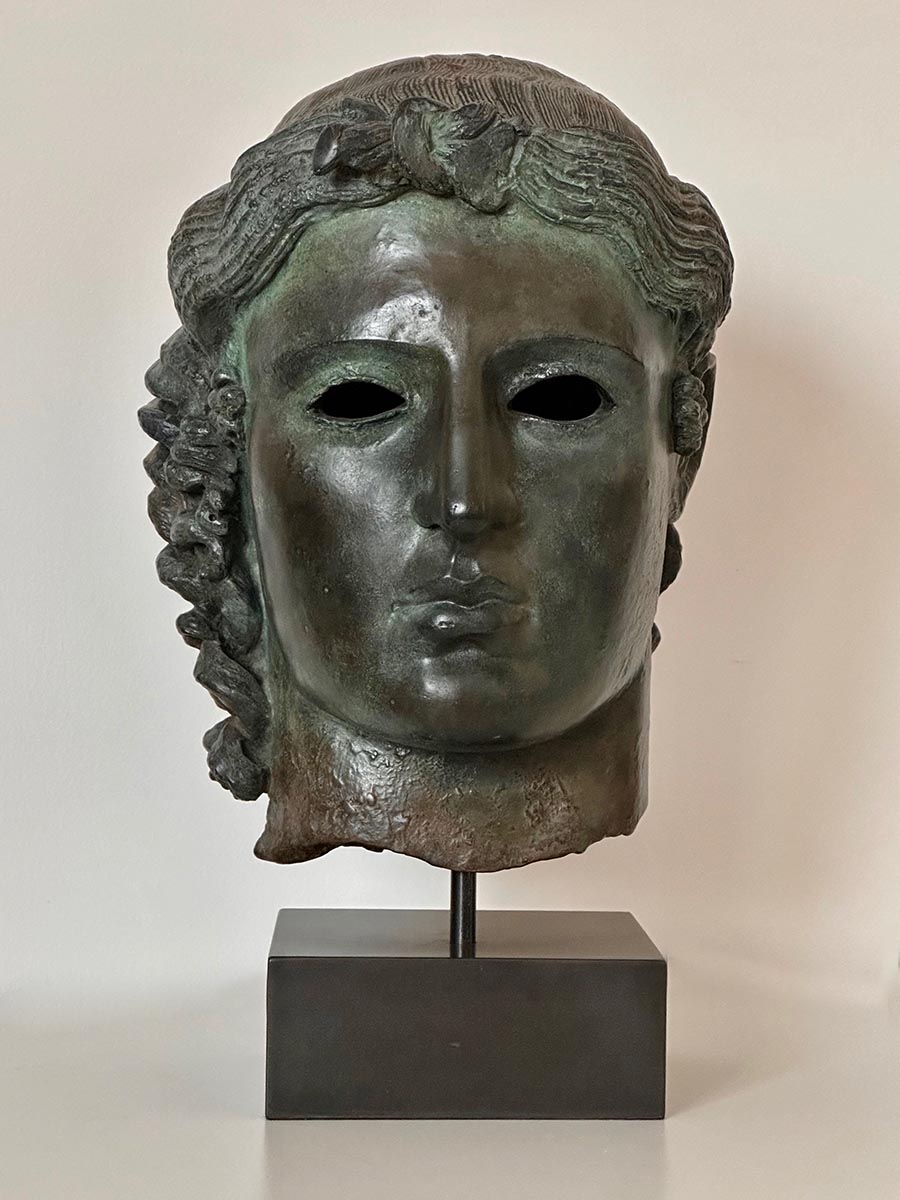
Greek & Roman Sculptures
Click on the image to enlarge.
Head of Aphrodite of Satala
Made by The Modern Souvenir Company Exclusively for the British Museum.
Exclusive to the British Museum, a detailed Jesmonite replica of the head of Aphrodite of Satala.
For further information or if out of stock at the BM, please contact us on T: + 44 (0)1225 789 996
Made by The Modern Souvenir Company Exclusively for the British Museum.
Exclusive to the British Museum, a detailed Jesmonite replica of the head of Aphrodite of Satala.
For further information or if out of stock at the BM, please contact us on T: + 44 (0)1225 789 996
More Info
This extraordinary piece has been made in the UK using a mould taken directly from the original which is now housed in the British Museum.
The bronze head was originally part of a complete statue, believed to represent Anahita, the eastern equivalent of Aphrodite, the ancient Greek goddess of love.
The head dates to the 2nd or 1st century BC, and was discovered at Satala, modern Sadak, in north-eastern Turkey.
Aphrodite is believed to have been borne from the sea as a result of the castration of Ouranos, although Homer’s Iliad calls her the daughter of Zeus and Dione.
The intricate carving represents the famously unequalled beauty of Aphrodite, and her expression is both majestic and serene.
The deeply set eyes would have originally contained precious stones or enamel.
A left hand that was discovered at the same time as the head would have almost certainly have once belonged to the same full-length figure.
A majestic ornament for a lover of classical Greek statue.
Height 44cm
Width 38cm
Length 33cm
The bronze head was originally part of a complete statue, believed to represent Anahita, the eastern equivalent of Aphrodite, the ancient Greek goddess of love.
The head dates to the 2nd or 1st century BC, and was discovered at Satala, modern Sadak, in north-eastern Turkey.
Aphrodite is believed to have been borne from the sea as a result of the castration of Ouranos, although Homer’s Iliad calls her the daughter of Zeus and Dione.
The intricate carving represents the famously unequalled beauty of Aphrodite, and her expression is both majestic and serene.
The deeply set eyes would have originally contained precious stones or enamel.
A left hand that was discovered at the same time as the head would have almost certainly have once belonged to the same full-length figure.
A majestic ornament for a lover of classical Greek statue.
Height 44cm
Width 38cm
Length 33cm
Click on the image to enlarge.
Head of Apollo (Chatsworth)
Made by The Modern Souvenir Company Exclusively for the British Museum.
Exclusive to the British Museum, a Jesmonite based replica of the Chatsworth Head of Apollo.
For further information or if out of stock at the BM, please contact us on T: + 44 (0)1225 789 996
Made by The Modern Souvenir Company Exclusively for the British Museum.
Exclusive to the British Museum, a Jesmonite based replica of the Chatsworth Head of Apollo.
For further information or if out of stock at the BM, please contact us on T: + 44 (0)1225 789 996
More Info
This astonishing Jesmonite replica is handmade in the UK and is moulded from an original bronze sculpture which was once owned by the Duke of Devonshire and preserved in a collection at Chatsworth House, and is now housed in the British Museum.
The replica is based on a 5th century BC statue which was slightly above life size.
The early Classical Greek-style head was discovered by peasants as part of a complete statue in Tamassos, Cyprus, at a site at which later excavations revealed a sanctuary dedicated to Apollo which, along with the size of the body and the long curly locks of hair, gives rise to the identification of the head as the god himself.
The body of the statue broke apart as it was removed from the ground, and the metal was sold for scrap, but the head was preserved.
The ancient Greek god Apollo was the son of Zeus and Leto, and the twin brother of Artemis. He was the god of music and poetry, and was closely associated with the sun.
The centre for his worship was based at Delphi, where Apollo undertook the protection of the oracle and occasionally passed the skill of divination to others.
A magnificent ornament for any lover of ancient Greek art.
Height 43cm
Width 26cm
Length 23cm
The replica is based on a 5th century BC statue which was slightly above life size.
The early Classical Greek-style head was discovered by peasants as part of a complete statue in Tamassos, Cyprus, at a site at which later excavations revealed a sanctuary dedicated to Apollo which, along with the size of the body and the long curly locks of hair, gives rise to the identification of the head as the god himself.
The body of the statue broke apart as it was removed from the ground, and the metal was sold for scrap, but the head was preserved.
The ancient Greek god Apollo was the son of Zeus and Leto, and the twin brother of Artemis. He was the god of music and poetry, and was closely associated with the sun.
The centre for his worship was based at Delphi, where Apollo undertook the protection of the oracle and occasionally passed the skill of divination to others.
A magnificent ornament for any lover of ancient Greek art.
Height 43cm
Width 26cm
Length 23cm
Click on the image to enlarge.
Horse of Selene Large
Made by The Modern Souvenir Company, exclusively for the British Museum.
Exclusive to the British Museum, a fabulous plaster replica of the Horse of Selene.
For further information or if out of stock at the BM, please contact us on T: + 44 (0)1225 789 996
Made by The Modern Souvenir Company, exclusively for the British Museum.
Exclusive to the British Museum, a fabulous plaster replica of the Horse of Selene.
For further information or if out of stock at the BM, please contact us on T: + 44 (0)1225 789 996
More Info
The Horse of Selene is a detail from the east pediment of the Parthenon in Athens, a temple from ancient Greece famed for its incredible marble sculptures.
The horse originates from the Acropolis in Athens, and dates to 438-432 BC.
The sculpture captures the very essence of the enervation felt by a beast that has spent the night drawing the chariot of the moon goddess across the sky.
The horse pins back its ears, the jaw gapes, the nostrils flare, the eyes bulge, veins stand out and the flesh seems spare and taut over the flat plane of the cheekbone.
The horse originates from the Acropolis in Athens, and dates to 438-432 BC.
The sculpture captures the very essence of the enervation felt by a beast that has spent the night drawing the chariot of the moon goddess across the sky.
The horse pins back its ears, the jaw gapes, the nostrils flare, the eyes bulge, veins stand out and the flesh seems spare and taut over the flat plane of the cheekbone.
Click on the image to enlarge.
Horse of Selene Small
Made by The Modern Souvenir Company Exclusively for the British Museum.
Exclusive to the British Museum, a small replica of the majestic Horse of Selene.
For further information or if out of stock at the BM, please contact us on T: + 44 (0)1225 789 996
Made by The Modern Souvenir Company Exclusively for the British Museum.
Exclusive to the British Museum, a small replica of the majestic Horse of Selene.
For further information or if out of stock at the BM, please contact us on T: + 44 (0)1225 789 996
More Info
Crafted in in the UK, the reverse side to this highly detailed resin replica is a flat plane, meaning the ornament can be displayed face on, or used as a stylish bookend.
The Horse of Selene is a detail from the east pediment of the Parthenon in Athens, a temple from ancient Greece famed for its incredible marble sculptures.
The horse originates from the Acropolis in Athens, and dates to 438-432 BC.
The sculpture captures the very essence of the enervation felt by a beast that has spent the night drawing the chariot of the moon goddess across the sky.
The horse pins back its ears, the jaw gapes, the nostrils flare, the eyes bulge, veins stand out and the flesh seems spare and taut over the flat plane of the cheekbone.
The Horse of Selene is a detail from the east pediment of the Parthenon in Athens, a temple from ancient Greece famed for its incredible marble sculptures.
The horse originates from the Acropolis in Athens, and dates to 438-432 BC.
The sculpture captures the very essence of the enervation felt by a beast that has spent the night drawing the chariot of the moon goddess across the sky.
The horse pins back its ears, the jaw gapes, the nostrils flare, the eyes bulge, veins stand out and the flesh seems spare and taut over the flat plane of the cheekbone.
Greek & Roman Sculptures
Click on the image to enlarge.
Head of Aphrodite of Satala
Made by The Modern Souvenir Company Exclusively for the British Museum.
Exclusive to the British Museum, a detailed Jesmonite replica of the head of Aphrodite of Satala.
For further information or if out of stack at the BM, please contact us on T: + 44 (0)1225 789 996
Made by The Modern Souvenir Company Exclusively for the British Museum.
Exclusive to the British Museum, a detailed Jesmonite replica of the head of Aphrodite of Satala.
For further information or if out of stack at the BM, please contact us on T: + 44 (0)1225 789 996
More Info
This extraordinary piece has been made in the UK using a mould taken directly from the original which is now housed in the British Museum.
The bronze head was originally part of a complete statue, believed to represent Anahita, the eastern equivalent of Aphrodite, the ancient Greek goddess of love.
The head dates to the 2nd or 1st century BC, and was discovered at Satala, modern Sadak, in north-eastern Turkey.
Aphrodite is believed to have been borne from the sea as a result of the castration of Ouranos, although Homer’s Iliad calls her the daughter of Zeus and Dione.
The intricate carving represents the famously unequalled beauty of Aphrodite, and her expression is both majestic and serene.
The deeply set eyes would have originally contained precious stones or enamel.
A left hand that was discovered at the same time as the head would have almost certainly have once belonged to the same full-length figure.
A majestic ornament for a lover of classical Greek statue.
Height 44cm
Width 38cm
Length 33cm
The bronze head was originally part of a complete statue, believed to represent Anahita, the eastern equivalent of Aphrodite, the ancient Greek goddess of love.
The head dates to the 2nd or 1st century BC, and was discovered at Satala, modern Sadak, in north-eastern Turkey.
Aphrodite is believed to have been borne from the sea as a result of the castration of Ouranos, although Homer’s Iliad calls her the daughter of Zeus and Dione.
The intricate carving represents the famously unequalled beauty of Aphrodite, and her expression is both majestic and serene.
The deeply set eyes would have originally contained precious stones or enamel.
A left hand that was discovered at the same time as the head would have almost certainly have once belonged to the same full-length figure.
A majestic ornament for a lover of classical Greek statue.
Height 44cm
Width 38cm
Length 33cm
Click on the image to enlarge.
Head of Apollo (Chatsworth)
Made by The Modern Souvenir Company Exclusively for the British Museum.
Exclusive to the British Museum, a Jesmonite based replica of the Chatsworth Head of Apollo.
For further information or if out of stack at the BM, please contact us on T: + 44 (0)1225 789 996
Made by The Modern Souvenir Company Exclusively for the British Museum.
Exclusive to the British Museum, a Jesmonite based replica of the Chatsworth Head of Apollo.
For further information or if out of stack at the BM, please contact us on T: + 44 (0)1225 789 996
More Info
This astonishing Jesmonite replica is handmade in the UK and is moulded from an original bronze sculpture which was once owned by the Duke of Devonshire and preserved in a collection at Chatsworth House, and is now housed in the British Museum.
The replica is based on a 5th century BC statue which was slightly above life size.
The early Classical Greek-style head was discovered by peasants as part of a complete statue in Tamassos, Cyprus, at a site at which later excavations revealed a sanctuary dedicated to Apollo which, along with the size of the body and the long curly locks of hair, gives rise to the identification of the head as the god himself.
The body of the statue broke apart as it was removed from the ground, and the metal was sold for scrap, but the head was preserved.
The ancient Greek god Apollo was the son of Zeus and Leto, and the twin brother of Artemis. He was the god of music and poetry, and was closely associated with the sun.
The centre for his worship was based at Delphi, where Apollo undertook the protection of the oracle and occasionally passed the skill of divination to others.
A magnificent ornament for any lover of ancient Greek art.
Height 43cm
Width 26cm
Length 23cm
The replica is based on a 5th century BC statue which was slightly above life size.
The early Classical Greek-style head was discovered by peasants as part of a complete statue in Tamassos, Cyprus, at a site at which later excavations revealed a sanctuary dedicated to Apollo which, along with the size of the body and the long curly locks of hair, gives rise to the identification of the head as the god himself.
The body of the statue broke apart as it was removed from the ground, and the metal was sold for scrap, but the head was preserved.
The ancient Greek god Apollo was the son of Zeus and Leto, and the twin brother of Artemis. He was the god of music and poetry, and was closely associated with the sun.
The centre for his worship was based at Delphi, where Apollo undertook the protection of the oracle and occasionally passed the skill of divination to others.
A magnificent ornament for any lover of ancient Greek art.
Height 43cm
Width 26cm
Length 23cm
Click on the image to enlarge.
Horse of Selene Large
Made by The Modern Souvenir Company Exclusively for the British Museum.
Exclusive to the British Museum, a fabulous bronze replica of the head of Aphrodite of Satala.
For further information or if out of stack at the BM, please contact us on T: + 44 (0)1225 789 996
Made by The Modern Souvenir Company Exclusively for the British Museum.
Exclusive to the British Museum, a fabulous bronze replica of the head of Aphrodite of Satala.
For further information or if out of stack at the BM, please contact us on T: + 44 (0)1225 789 996
More Info
The Horse of Selene is a detail from the east pediment of the Parthenon in Athens, a temple from ancient Greece famed for its incredible marble sculptures.
The horse originates from the Acropolis in Athens, and dates to 438-432 BC.
The sculpture captures the very essence of the enervation felt by a beast that has spent the night drawing the chariot of the moon goddess across the sky.
The horse pins back its ears, the jaw gapes, the nostrils flare, the eyes bulge, veins stand out and the flesh seems spare and taut over the flat plane of the cheekbone.
The horse originates from the Acropolis in Athens, and dates to 438-432 BC.
The sculpture captures the very essence of the enervation felt by a beast that has spent the night drawing the chariot of the moon goddess across the sky.
The horse pins back its ears, the jaw gapes, the nostrils flare, the eyes bulge, veins stand out and the flesh seems spare and taut over the flat plane of the cheekbone.
Click on the image to enlarge.
Horse of Selene Small
Made by The Modern Souvenir Company Exclusively for the British Museum.
Exclusive to the British Museum, a replica of the majestic Horse of Selene.
For further information or if out of stack at the BM, please contact us on T: + 44 (0)1225 789 996
Made by The Modern Souvenir Company Exclusively for the British Museum.
Exclusive to the British Museum, a replica of the majestic Horse of Selene.
For further information or if out of stack at the BM, please contact us on T: + 44 (0)1225 789 996
More Info
Crafted in in the UK, the reverse side to this highly detailed resin replica is a flat plane, meaning the ornament can be displayed face on, or used as a stylish bookend.
The Horse of Selene is a detail from the east pediment of the Parthenon in Athens, a temple from ancient Greece famed for its incredible marble sculptures.
The horse originates from the Acropolis in Athens, and dates to 438-432 BC.
The sculpture captures the very essence of the enervation felt by a beast that has spent the night drawing the chariot of the moon goddess across the sky.
The horse pins back its ears, the jaw gapes, the nostrils flare, the eyes bulge, veins stand out and the flesh seems spare and taut over the flat plane of the cheekbone.
The Horse of Selene is a detail from the east pediment of the Parthenon in Athens, a temple from ancient Greece famed for its incredible marble sculptures.
The horse originates from the Acropolis in Athens, and dates to 438-432 BC.
The sculpture captures the very essence of the enervation felt by a beast that has spent the night drawing the chariot of the moon goddess across the sky.
The horse pins back its ears, the jaw gapes, the nostrils flare, the eyes bulge, veins stand out and the flesh seems spare and taut over the flat plane of the cheekbone.
